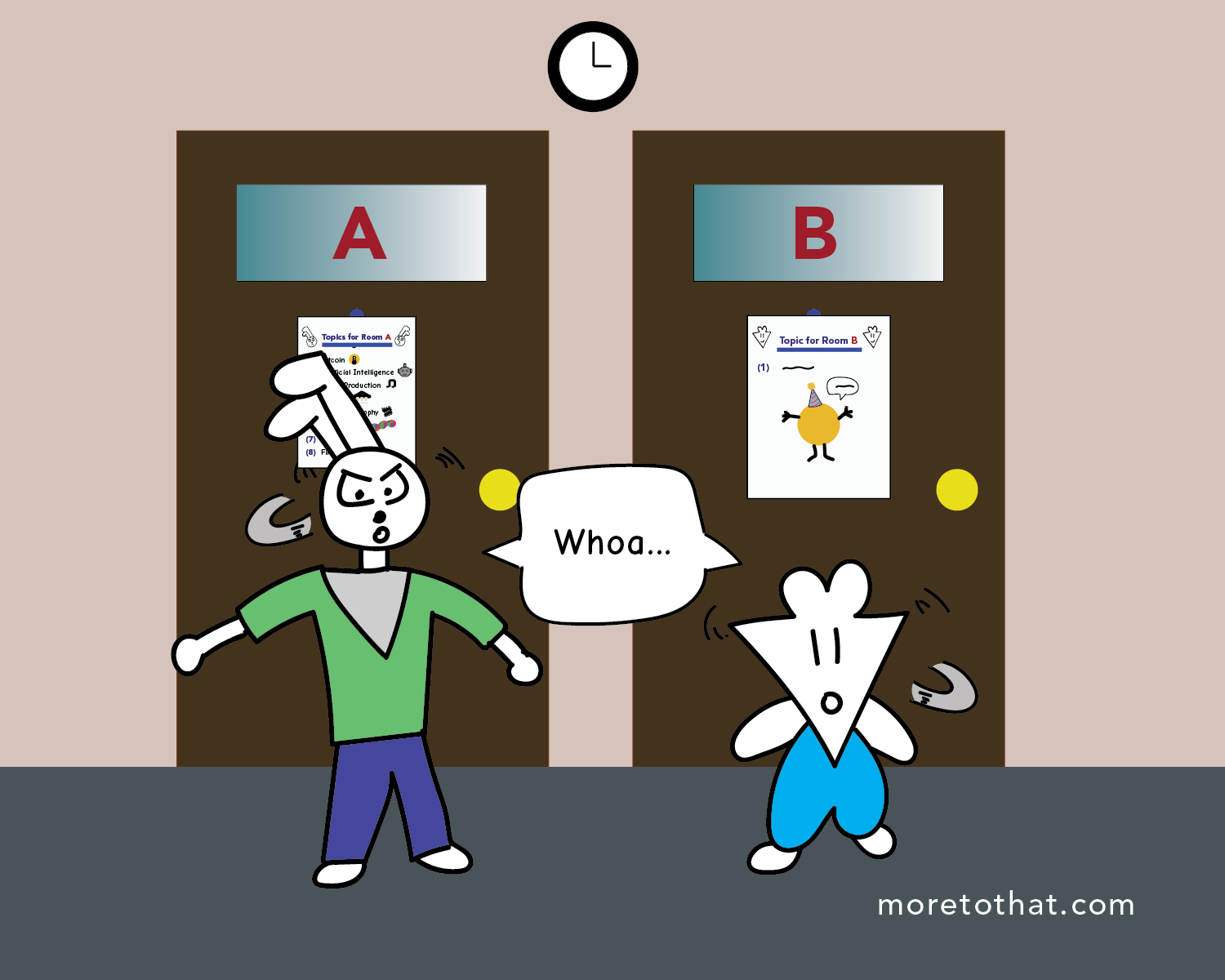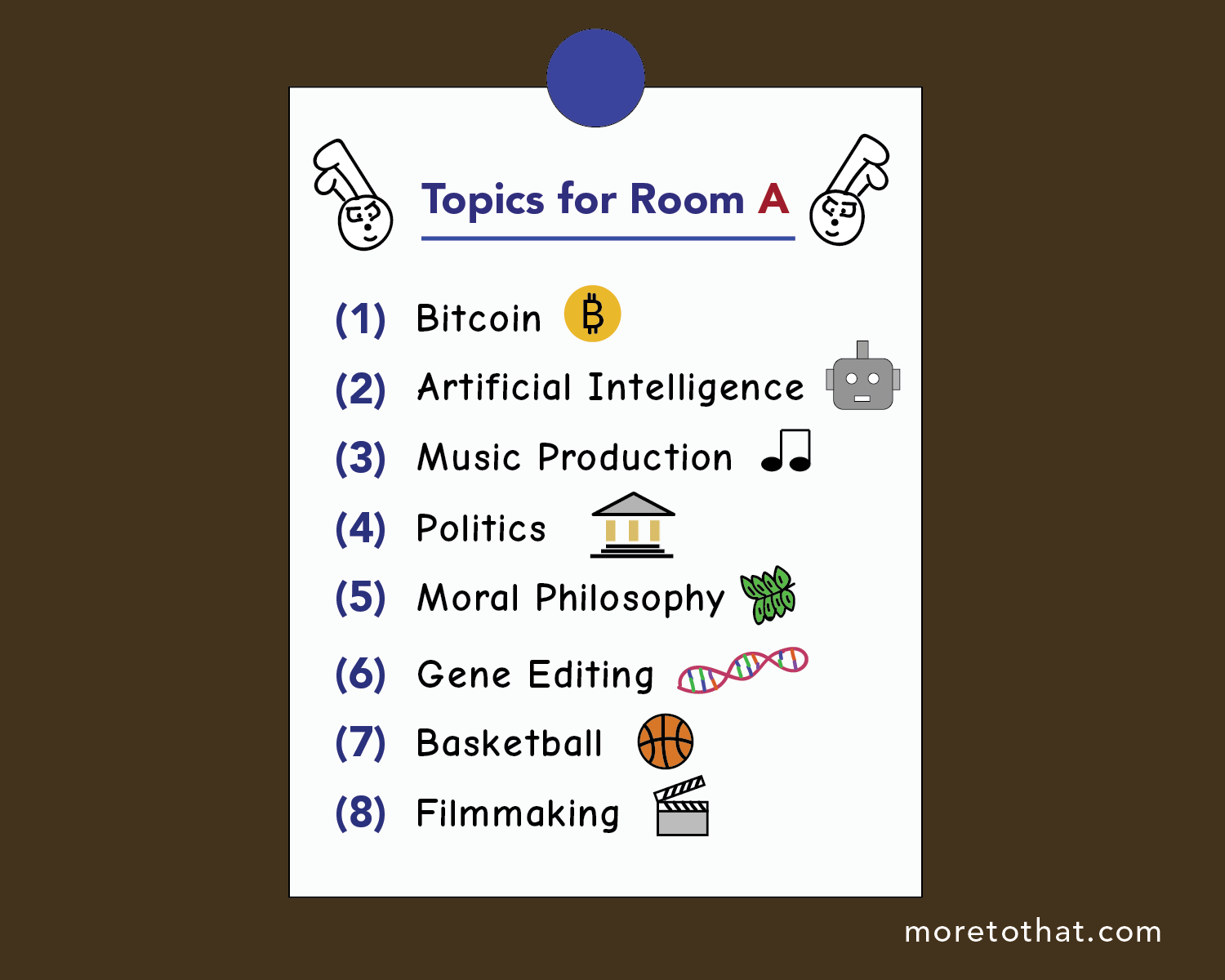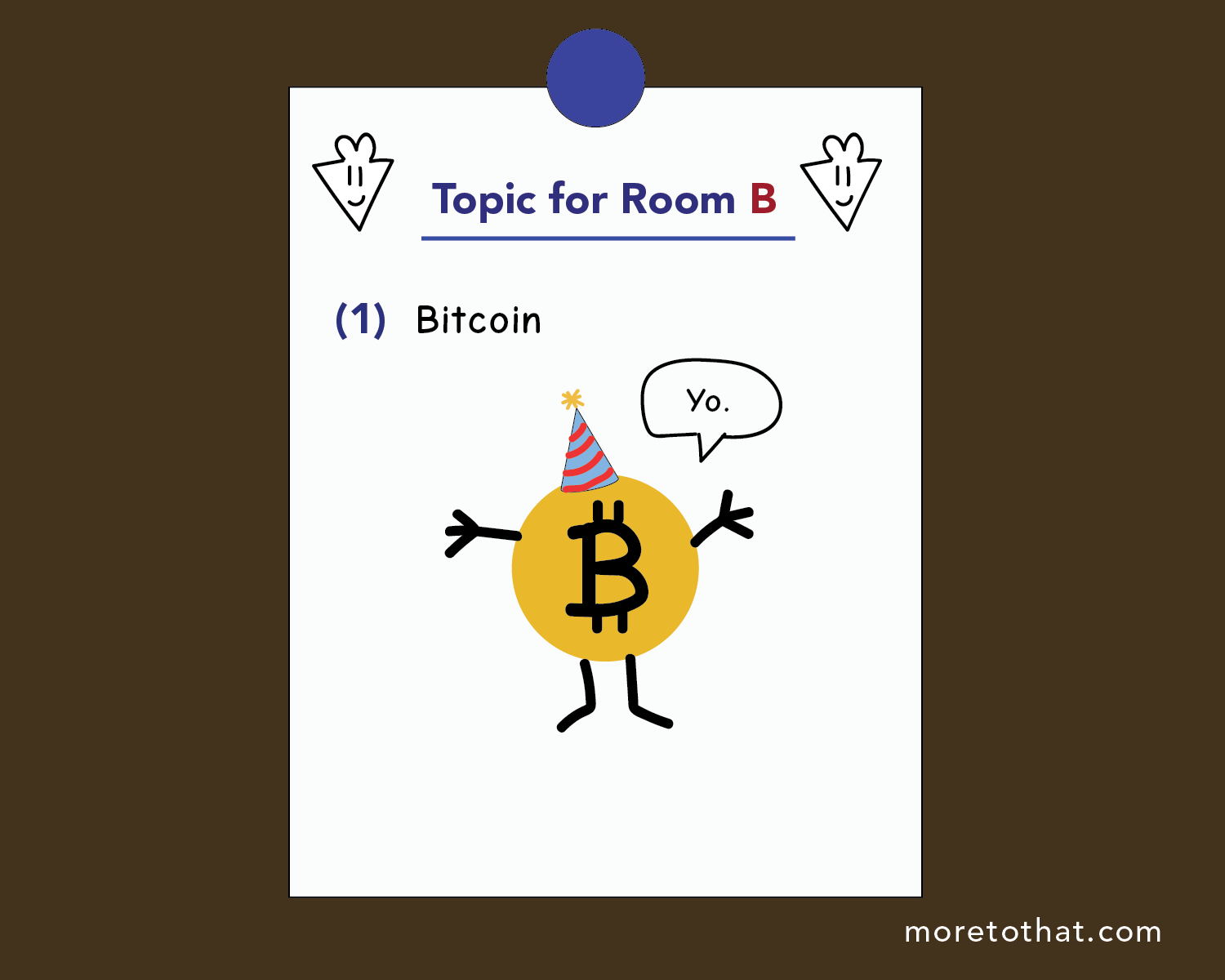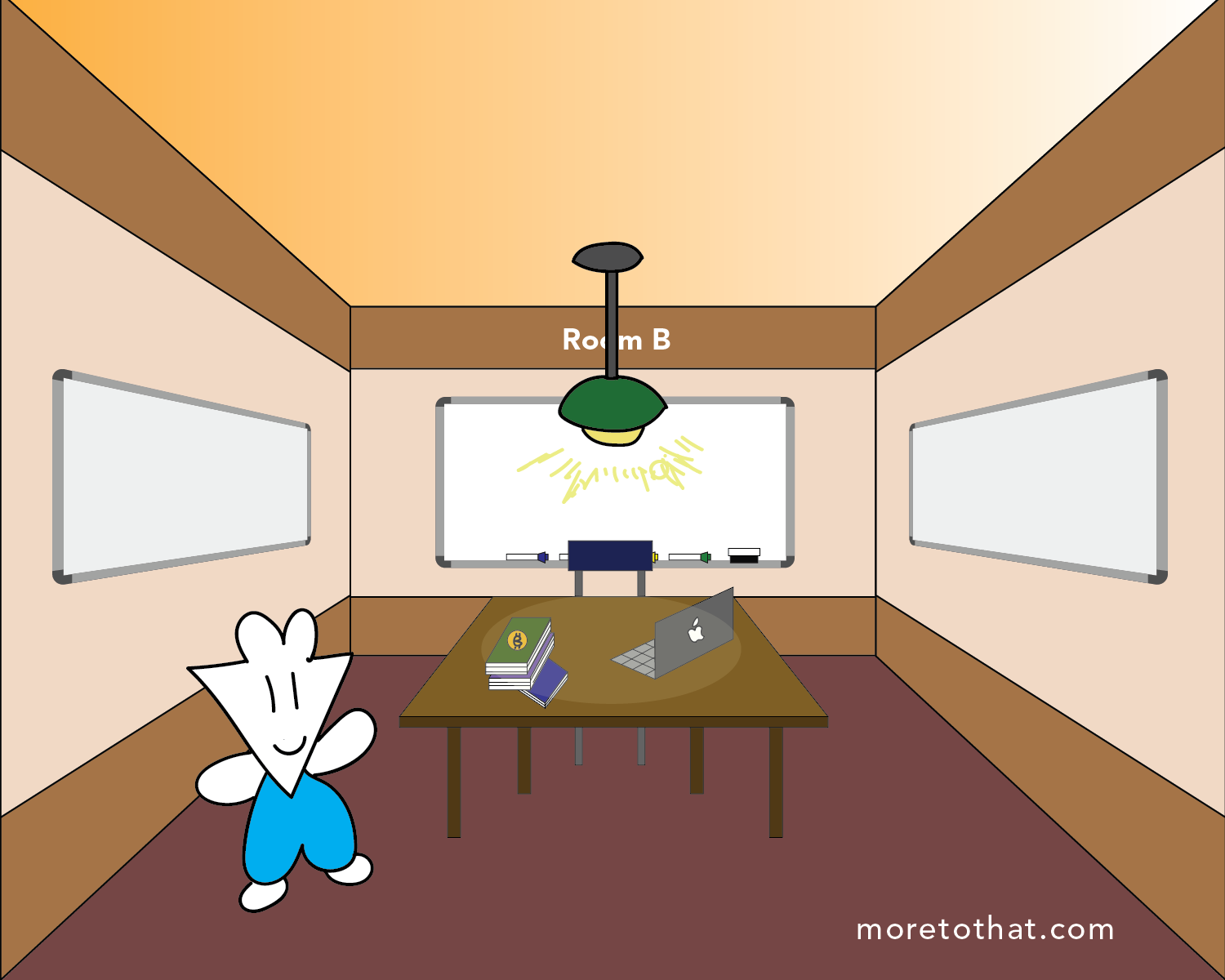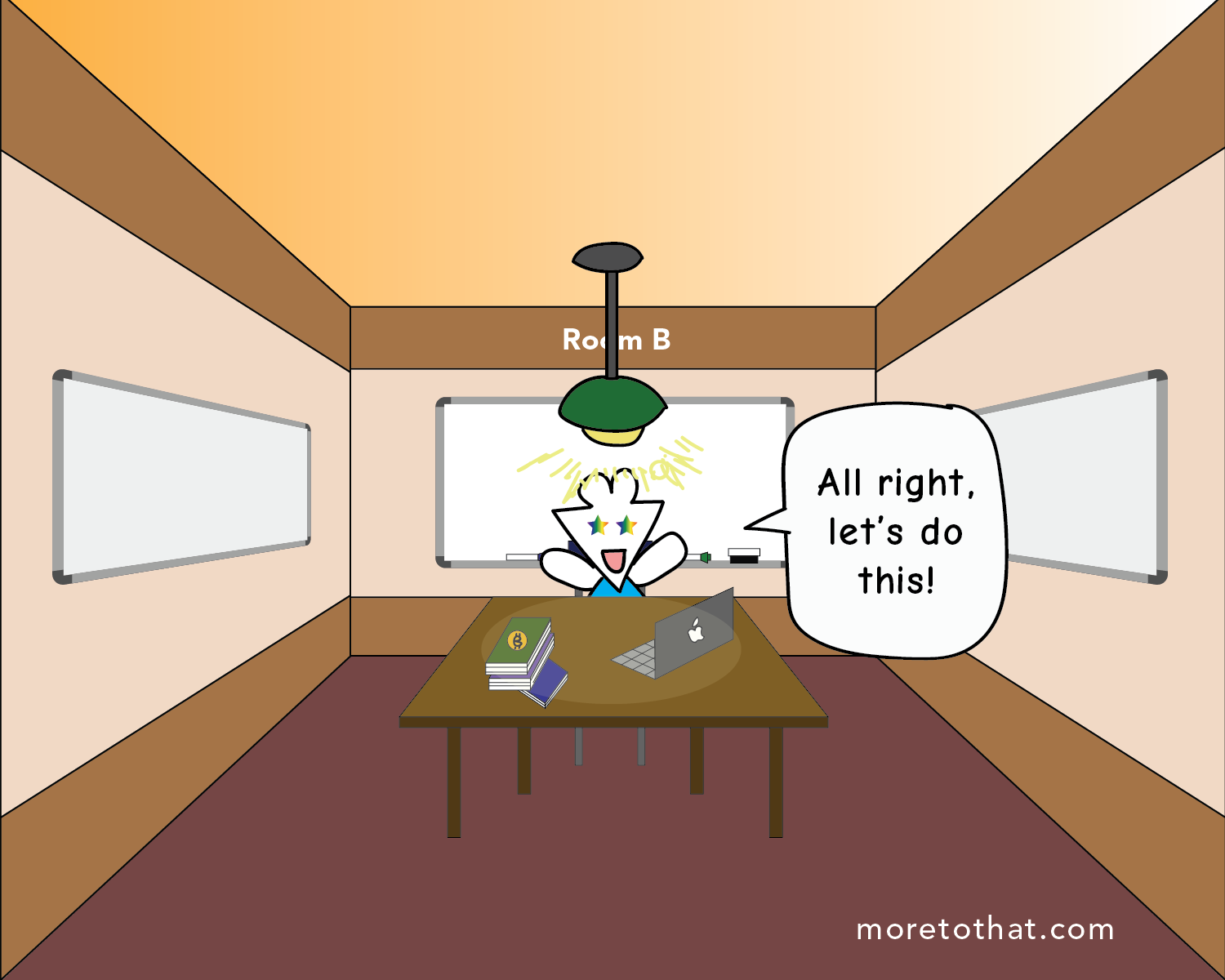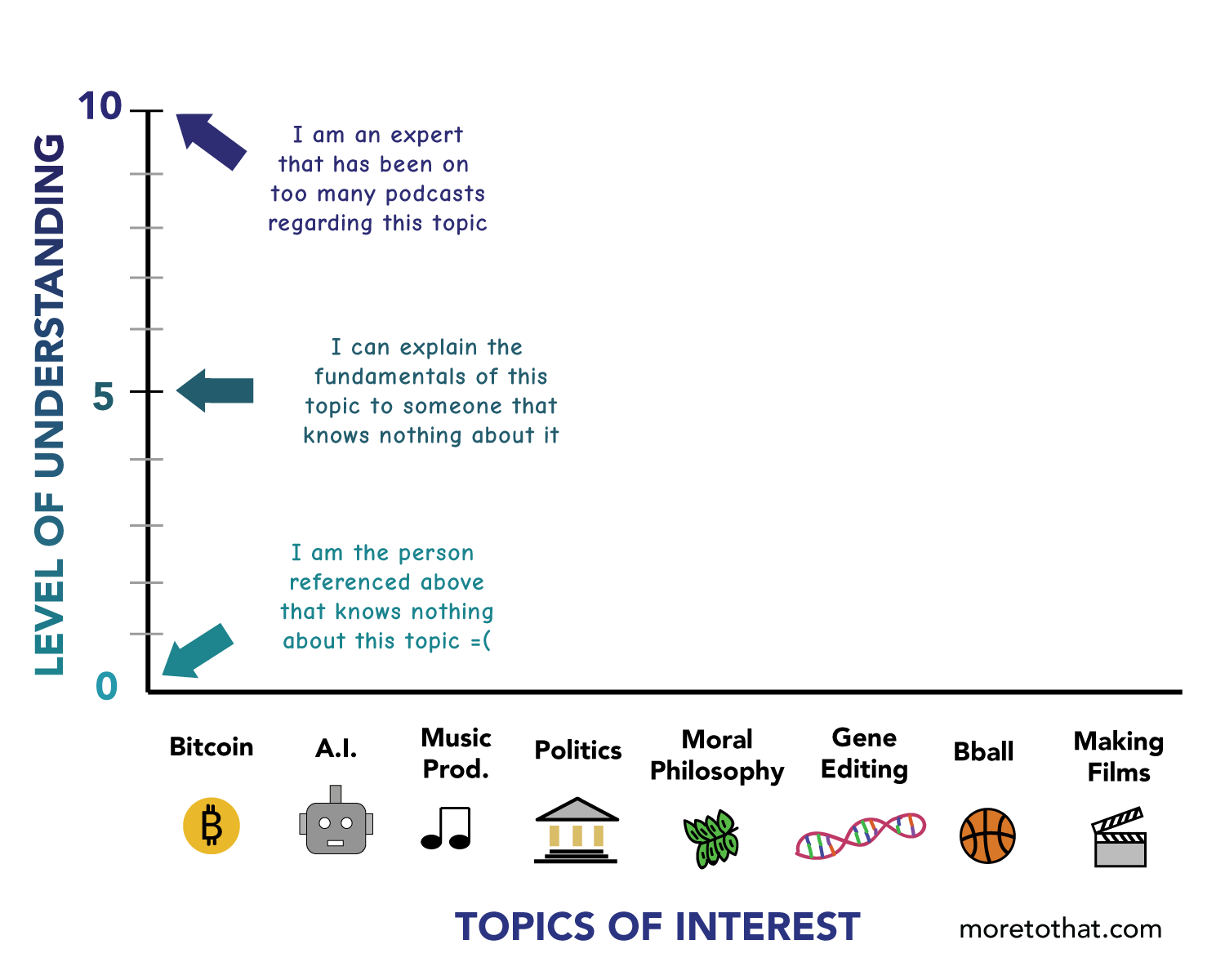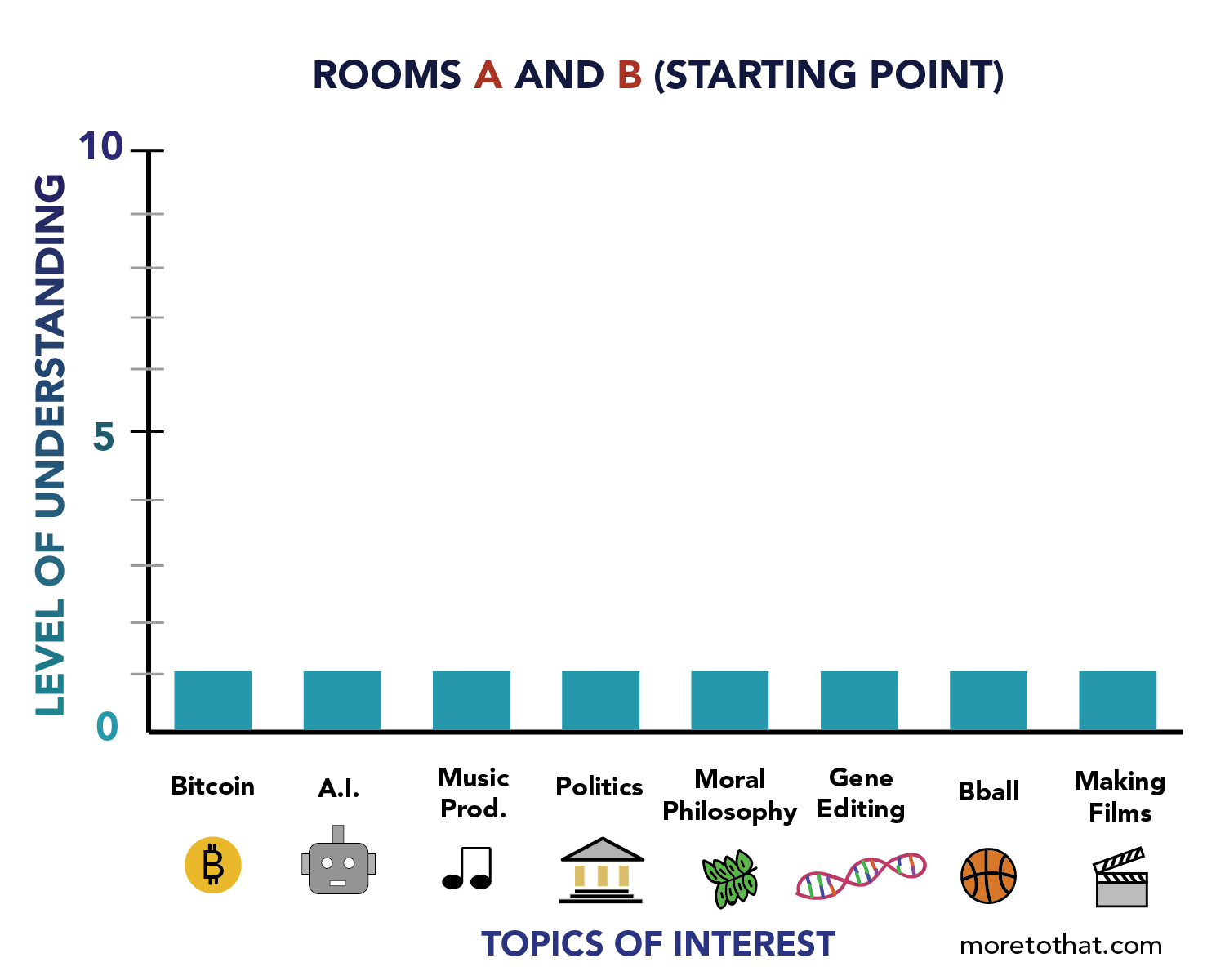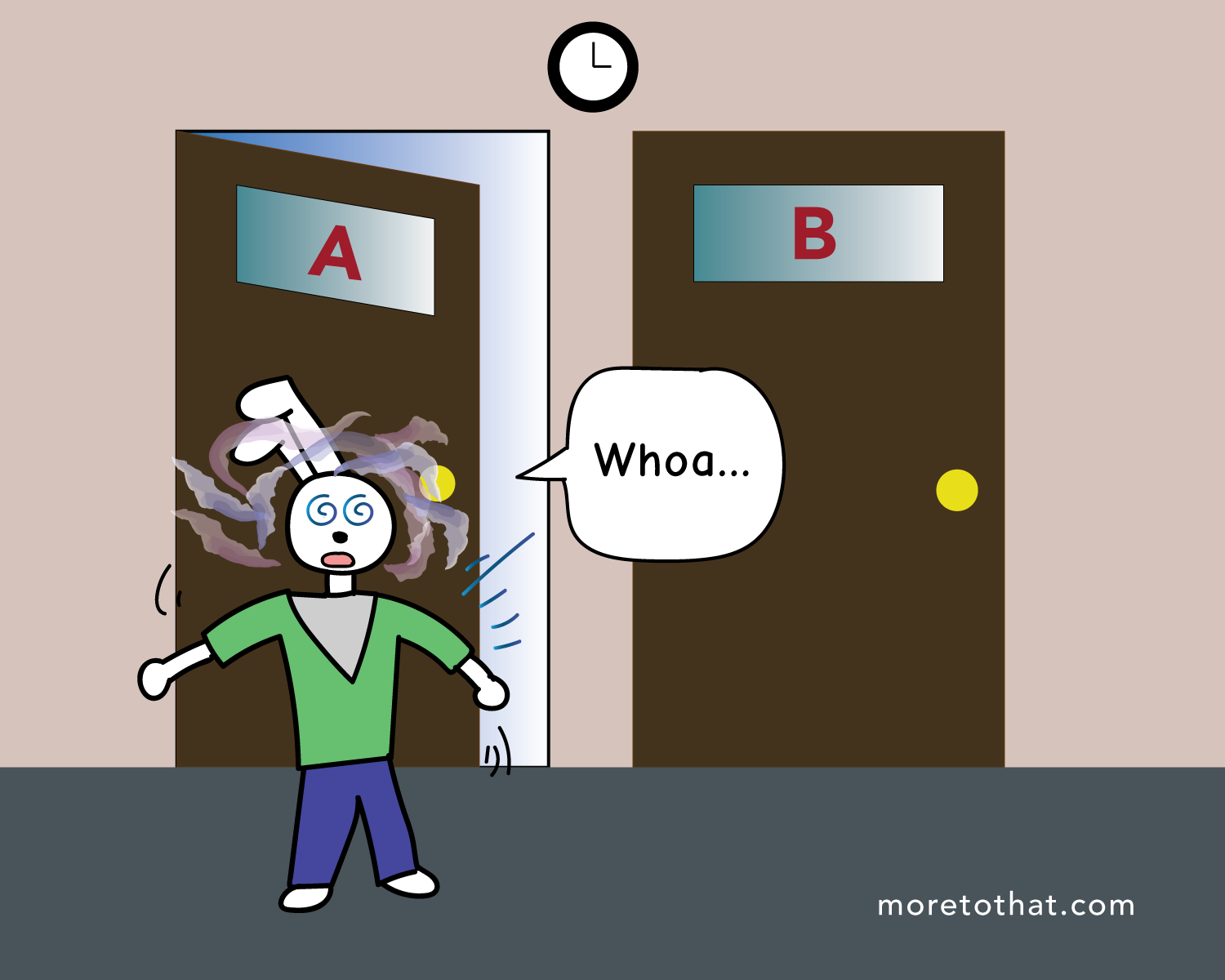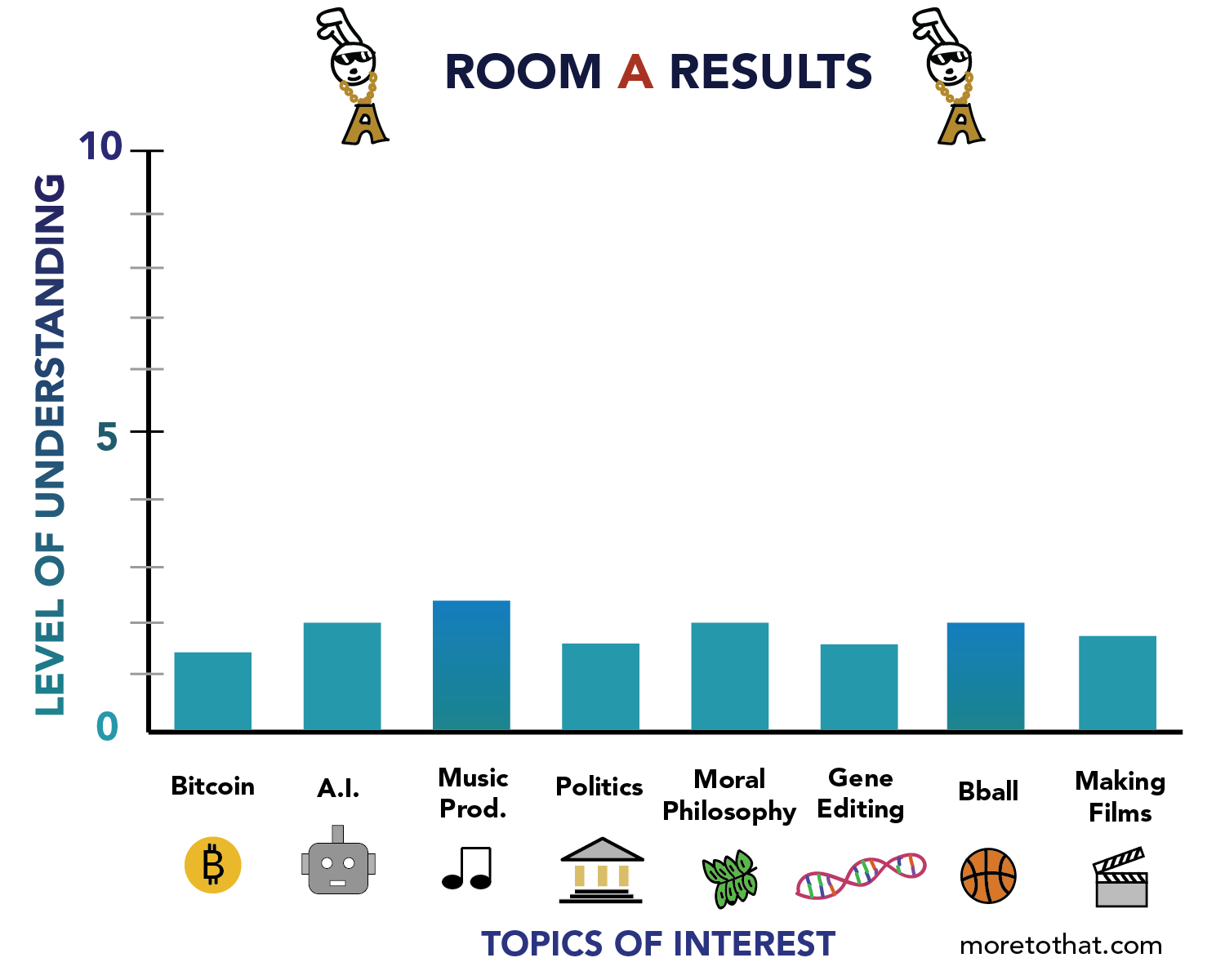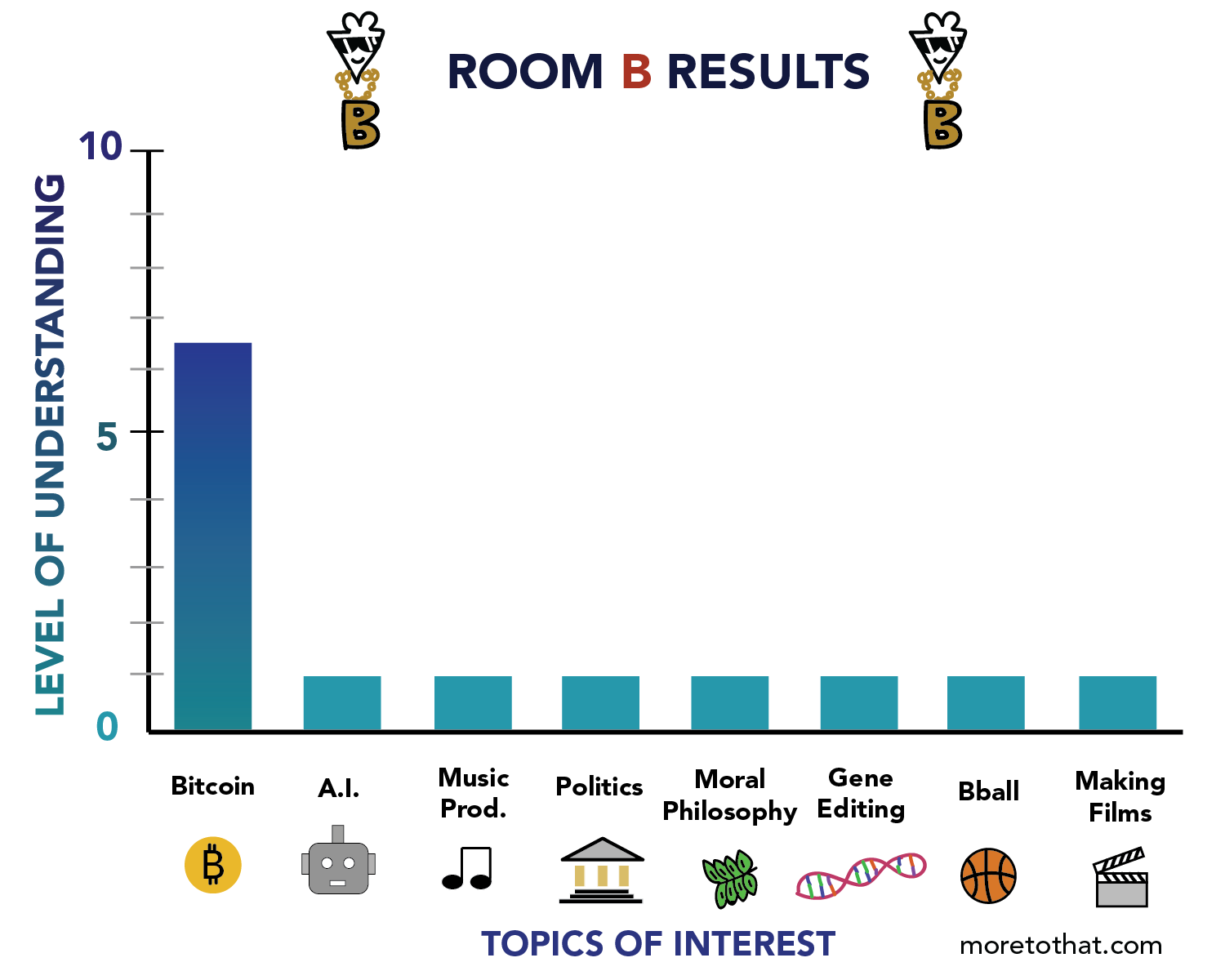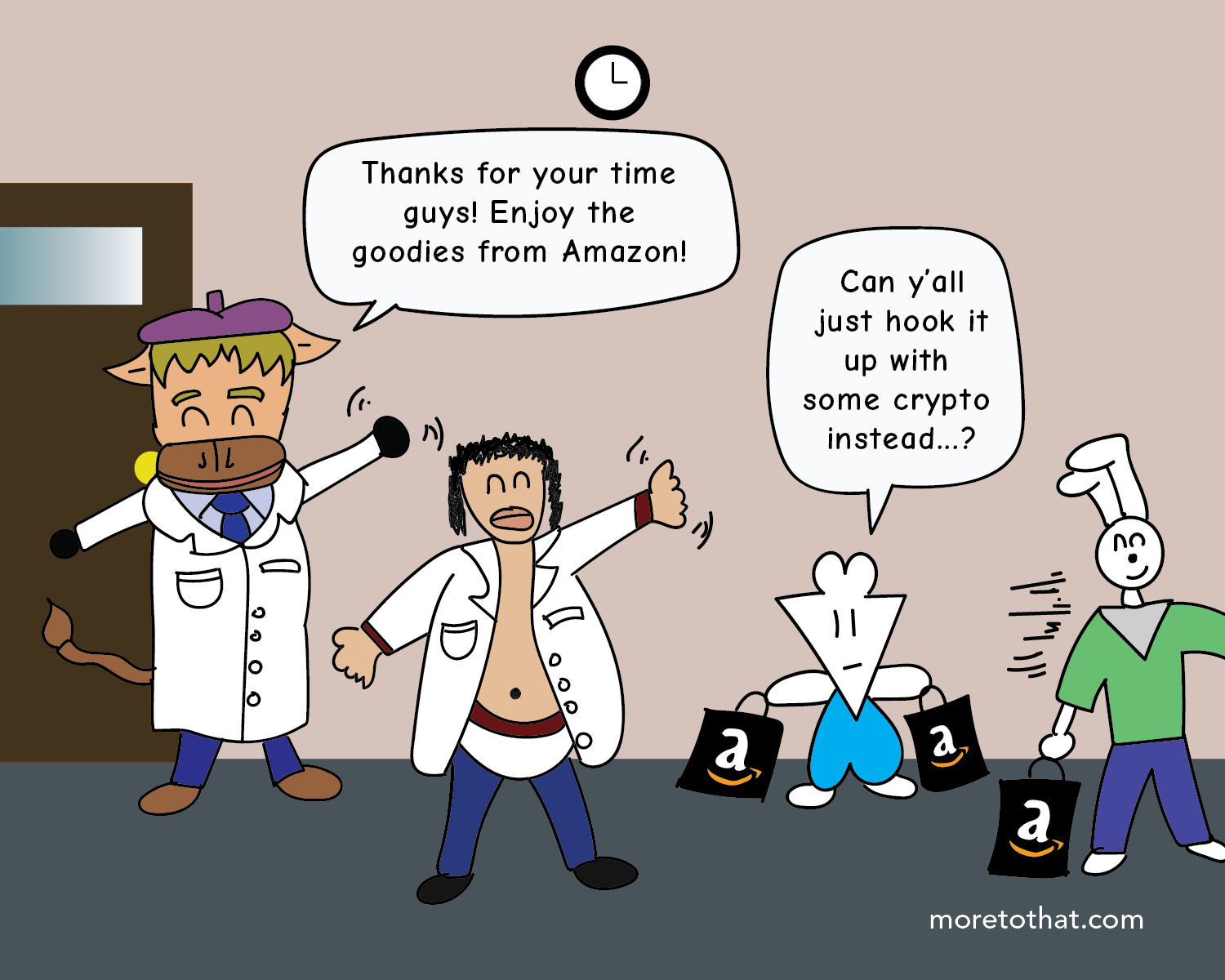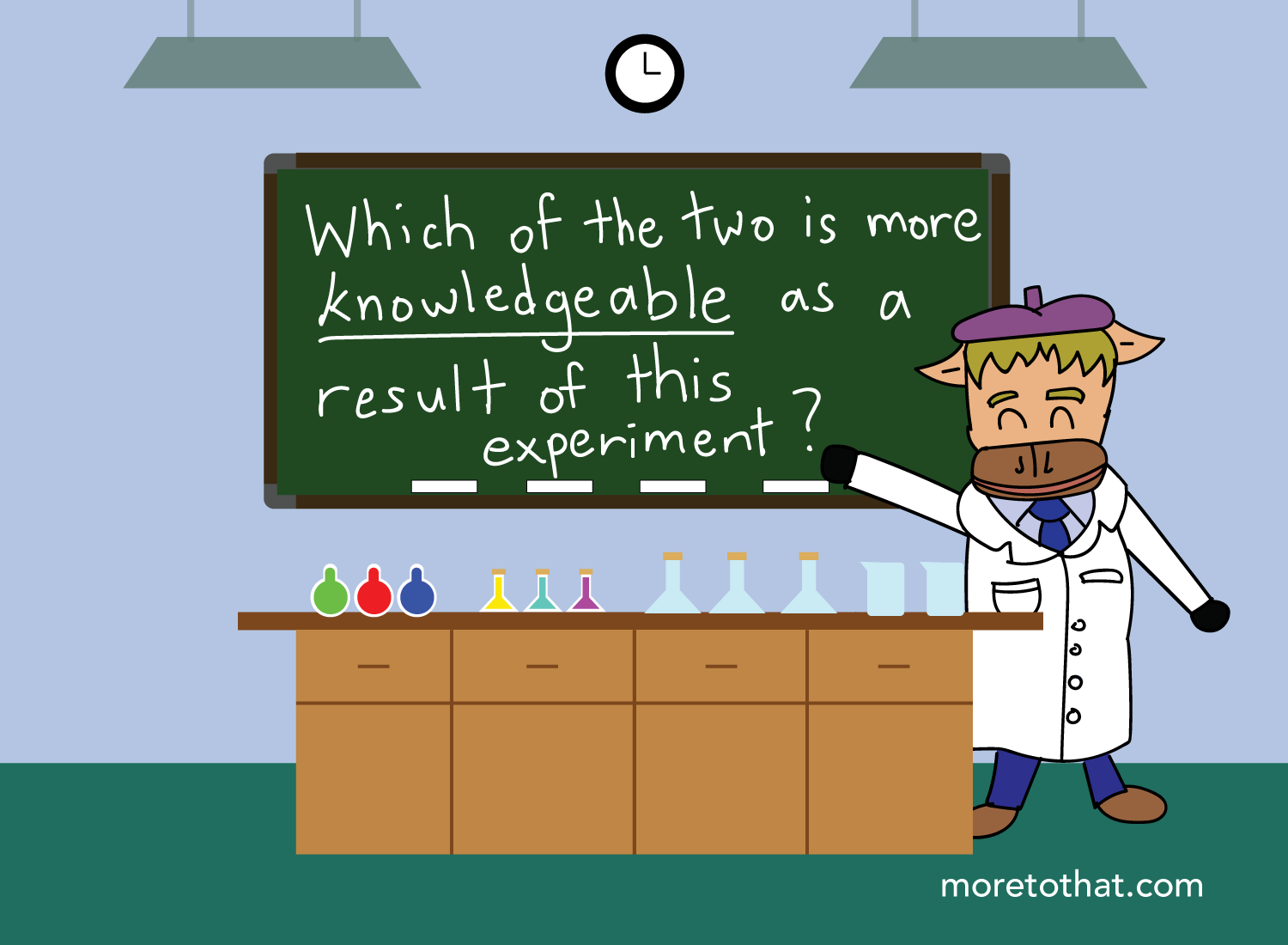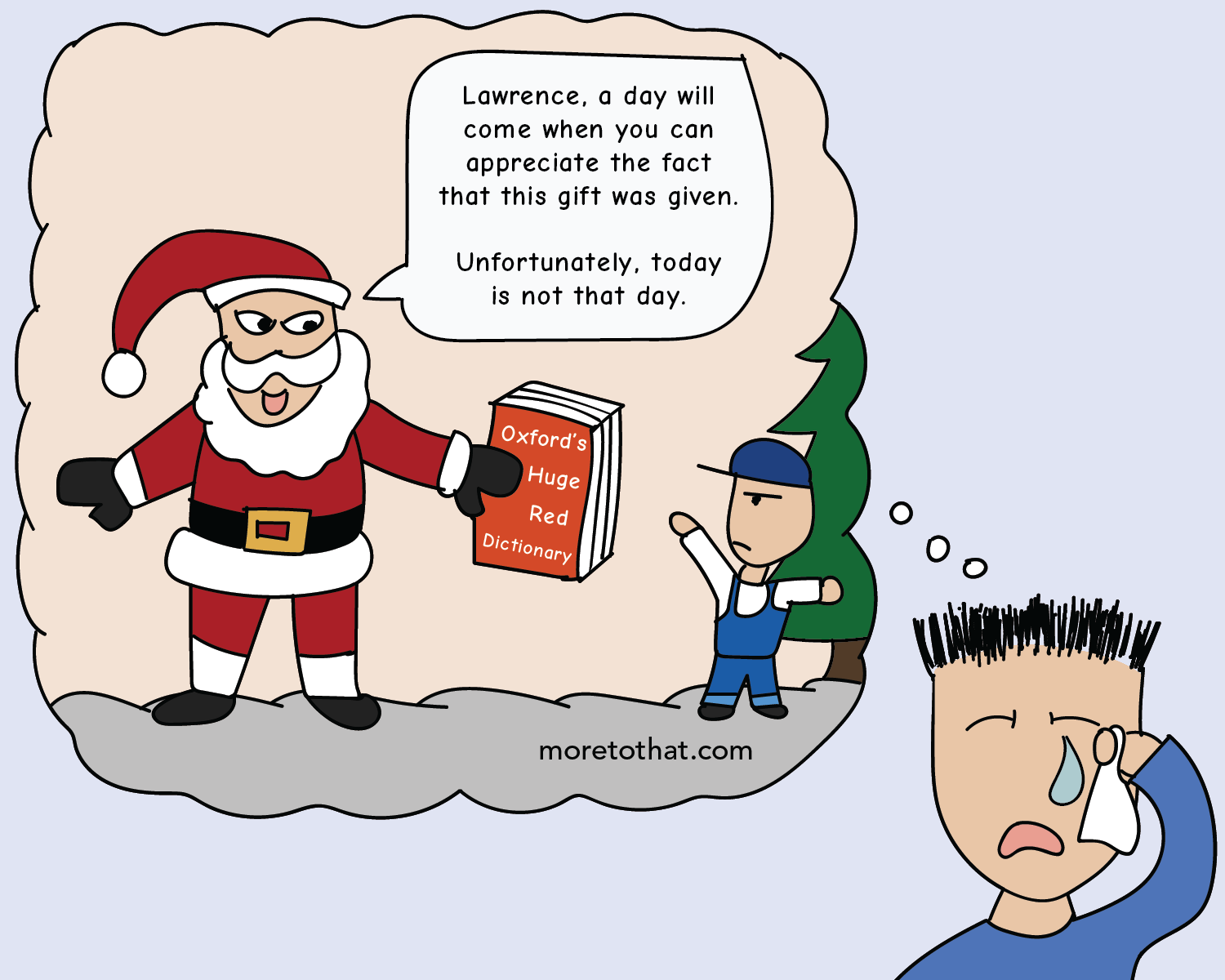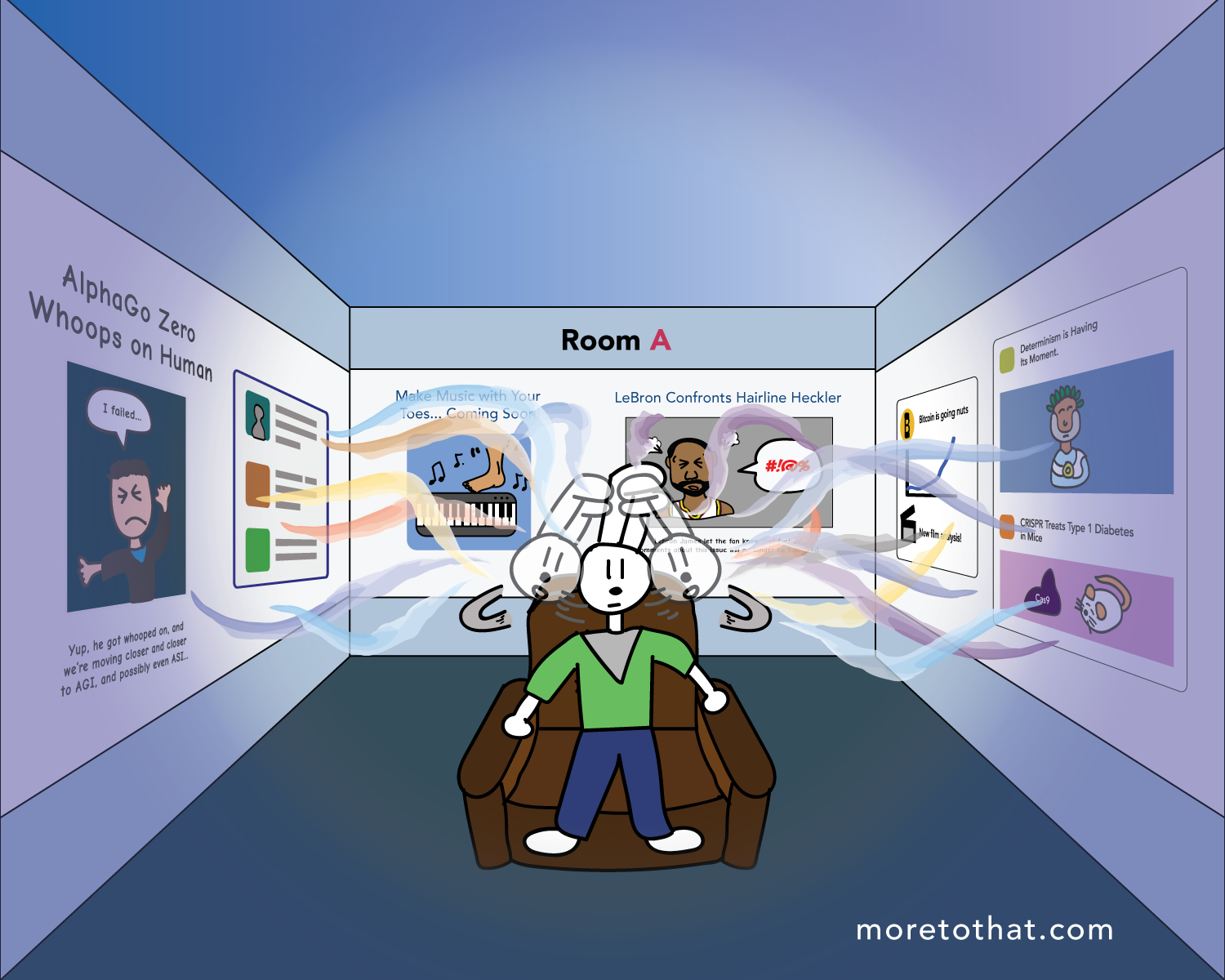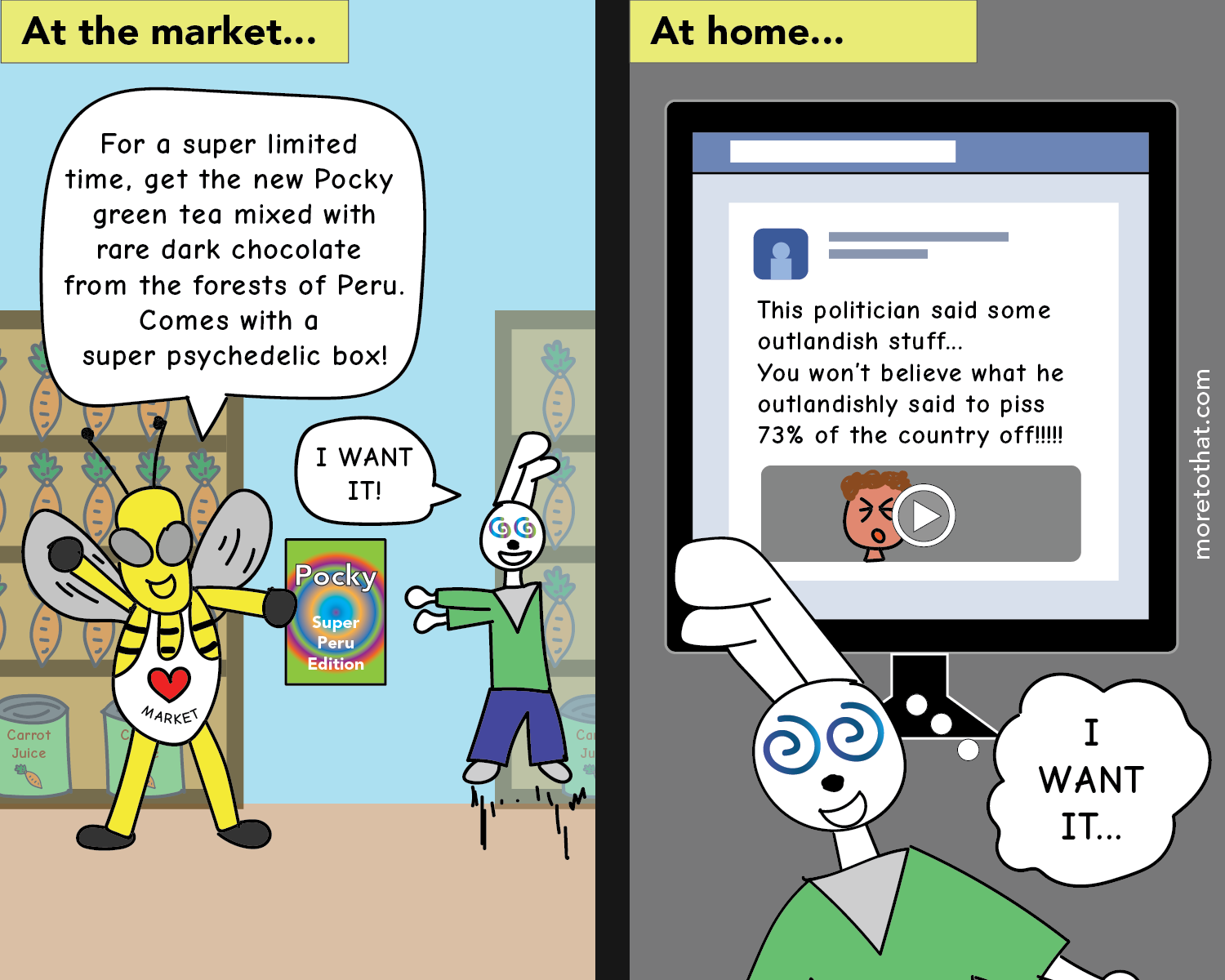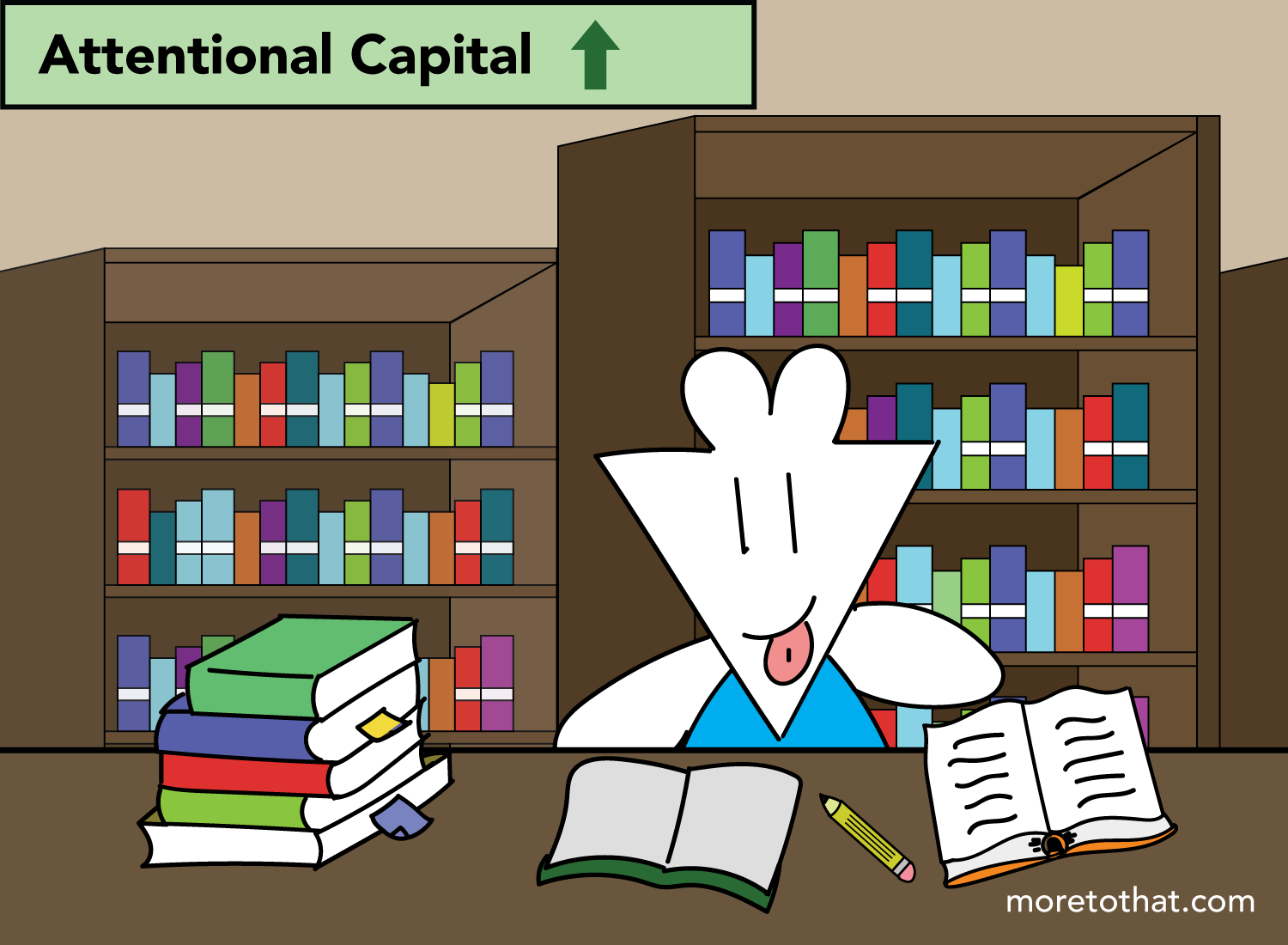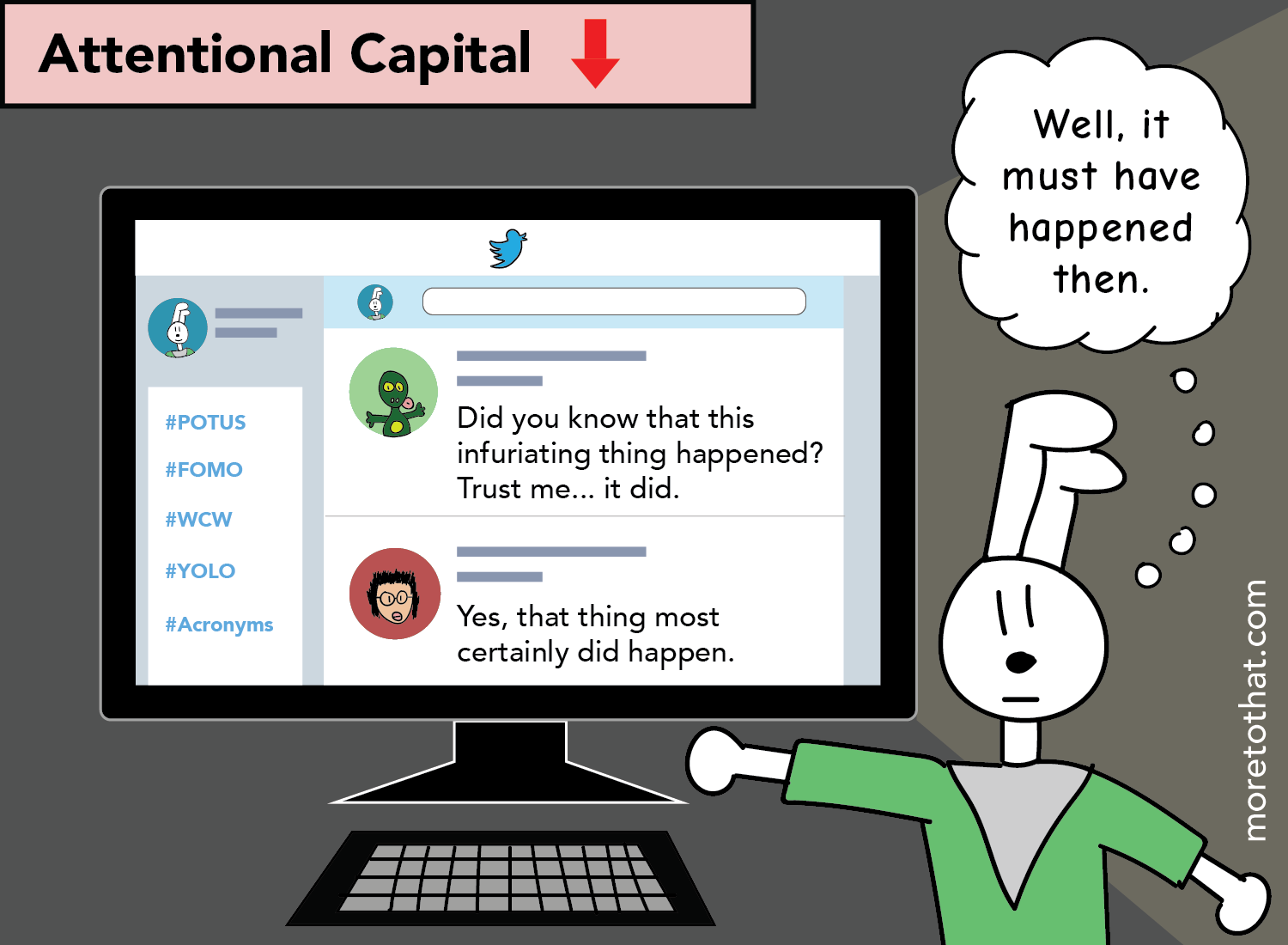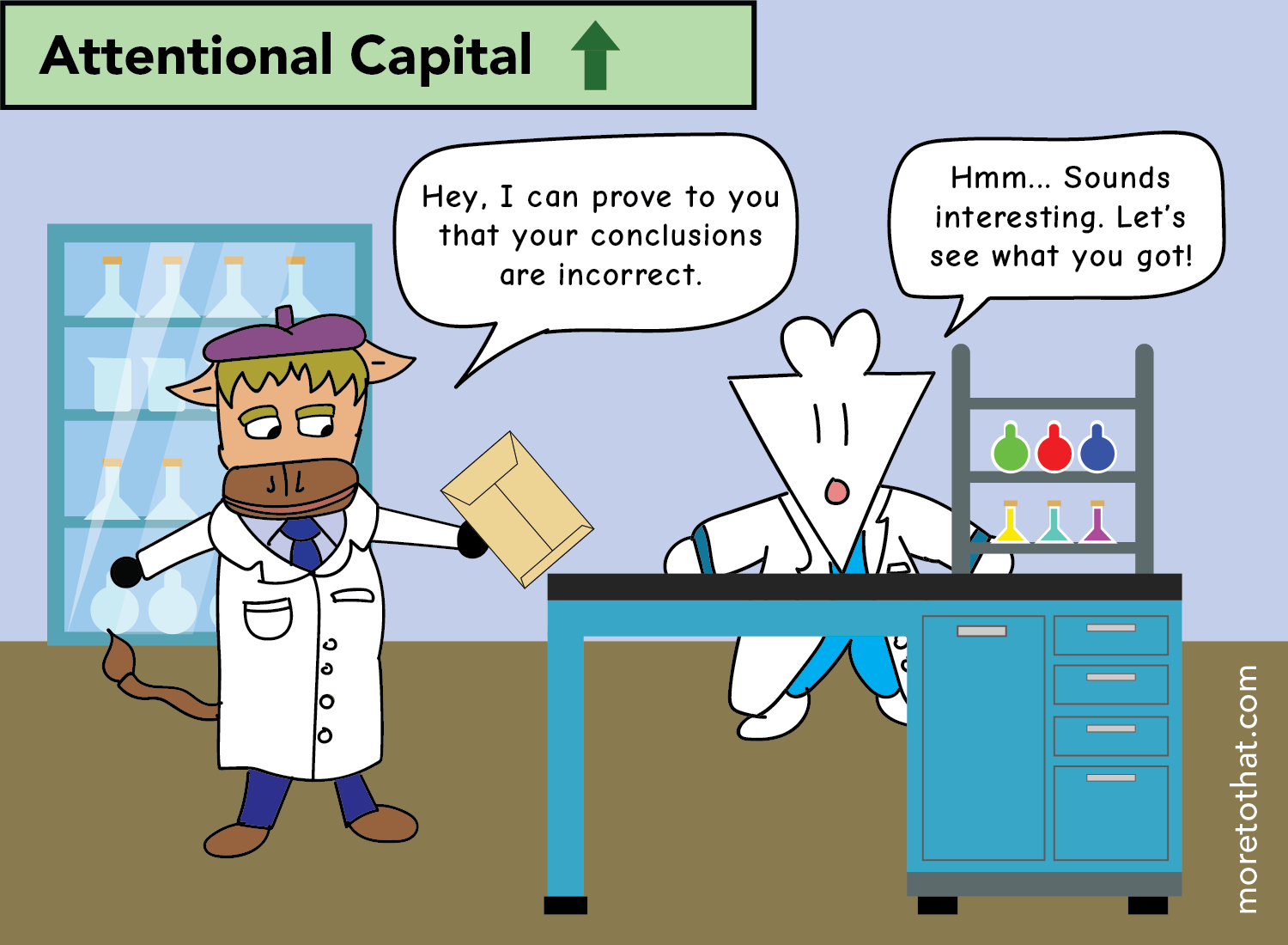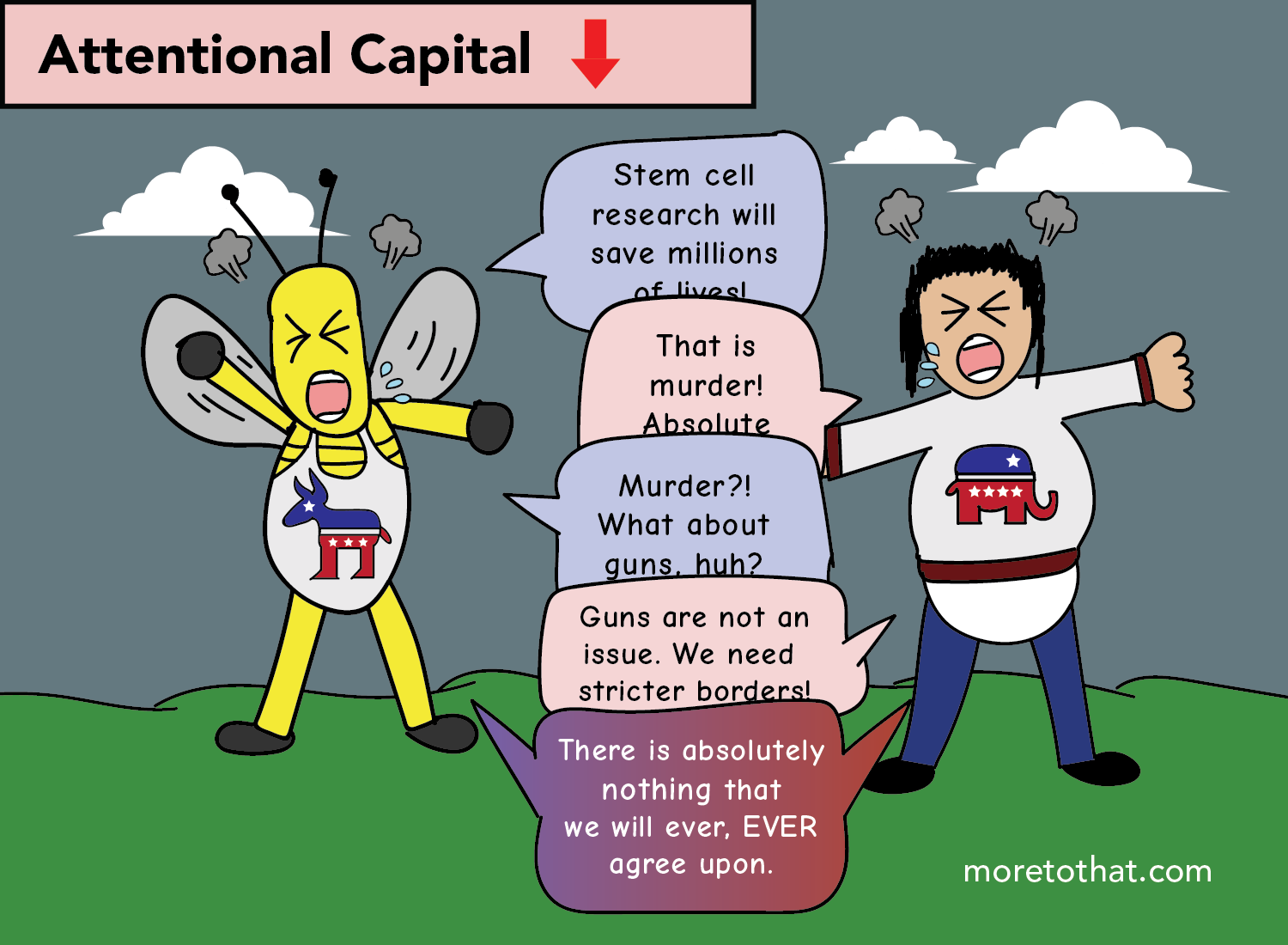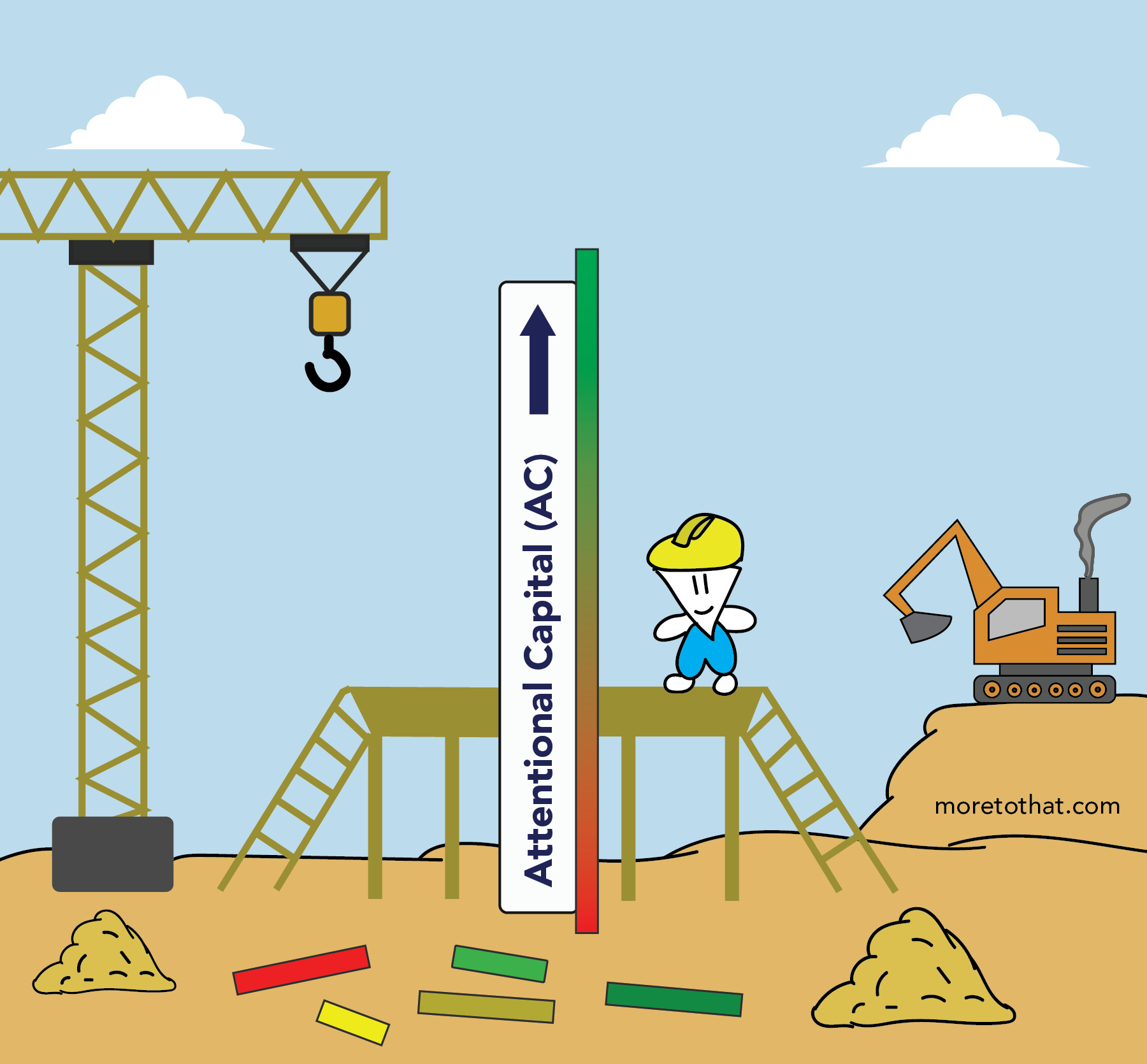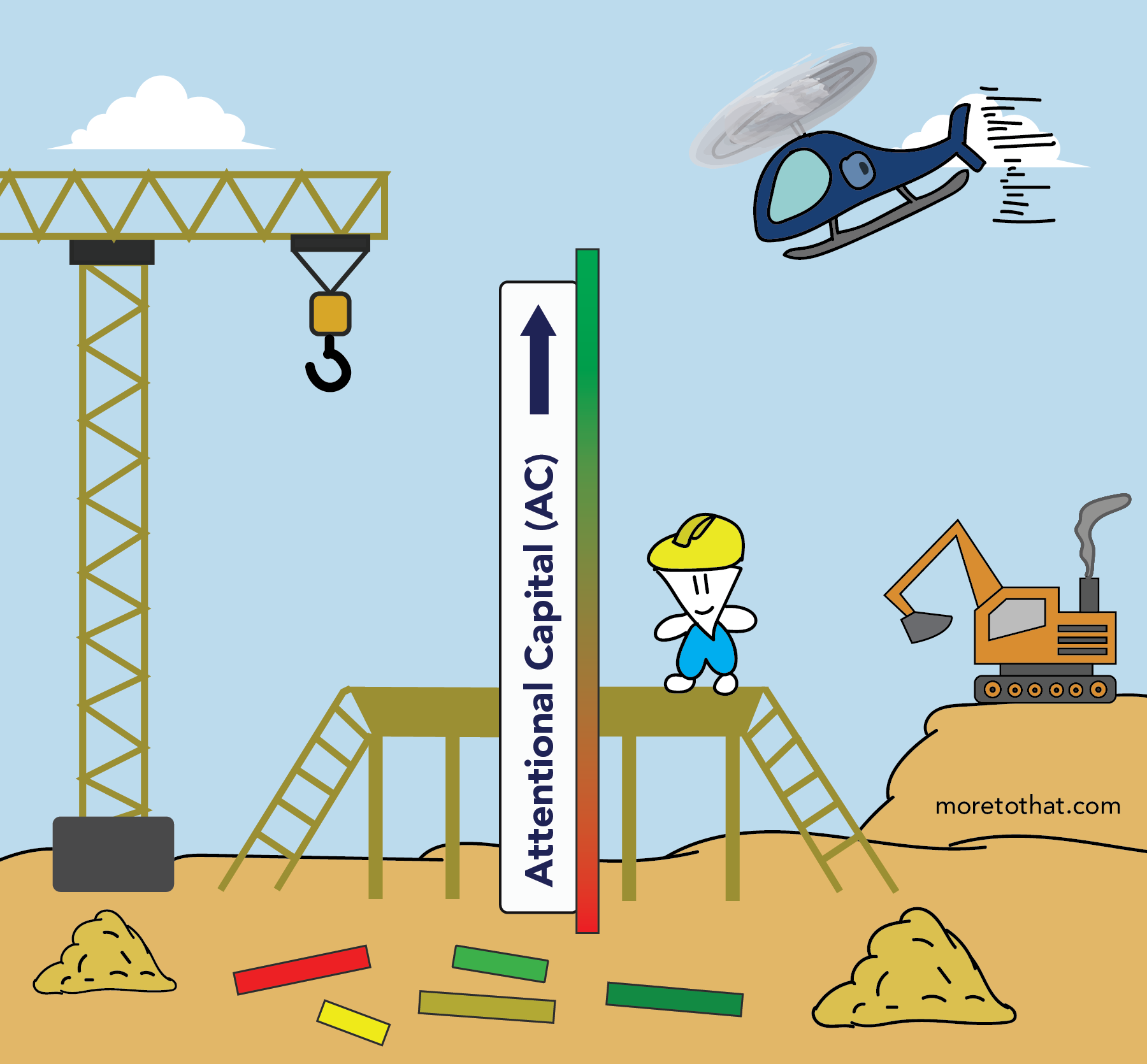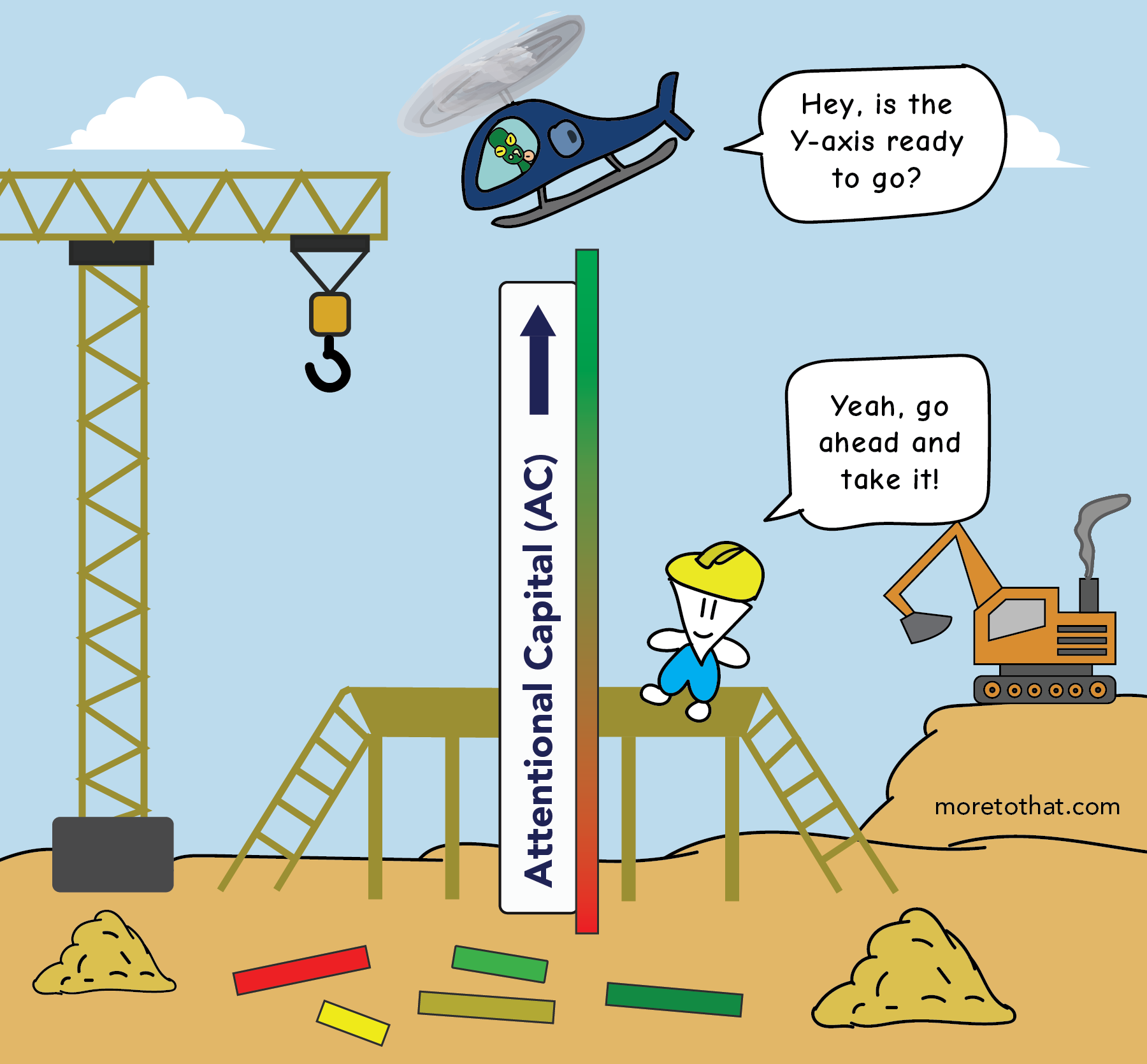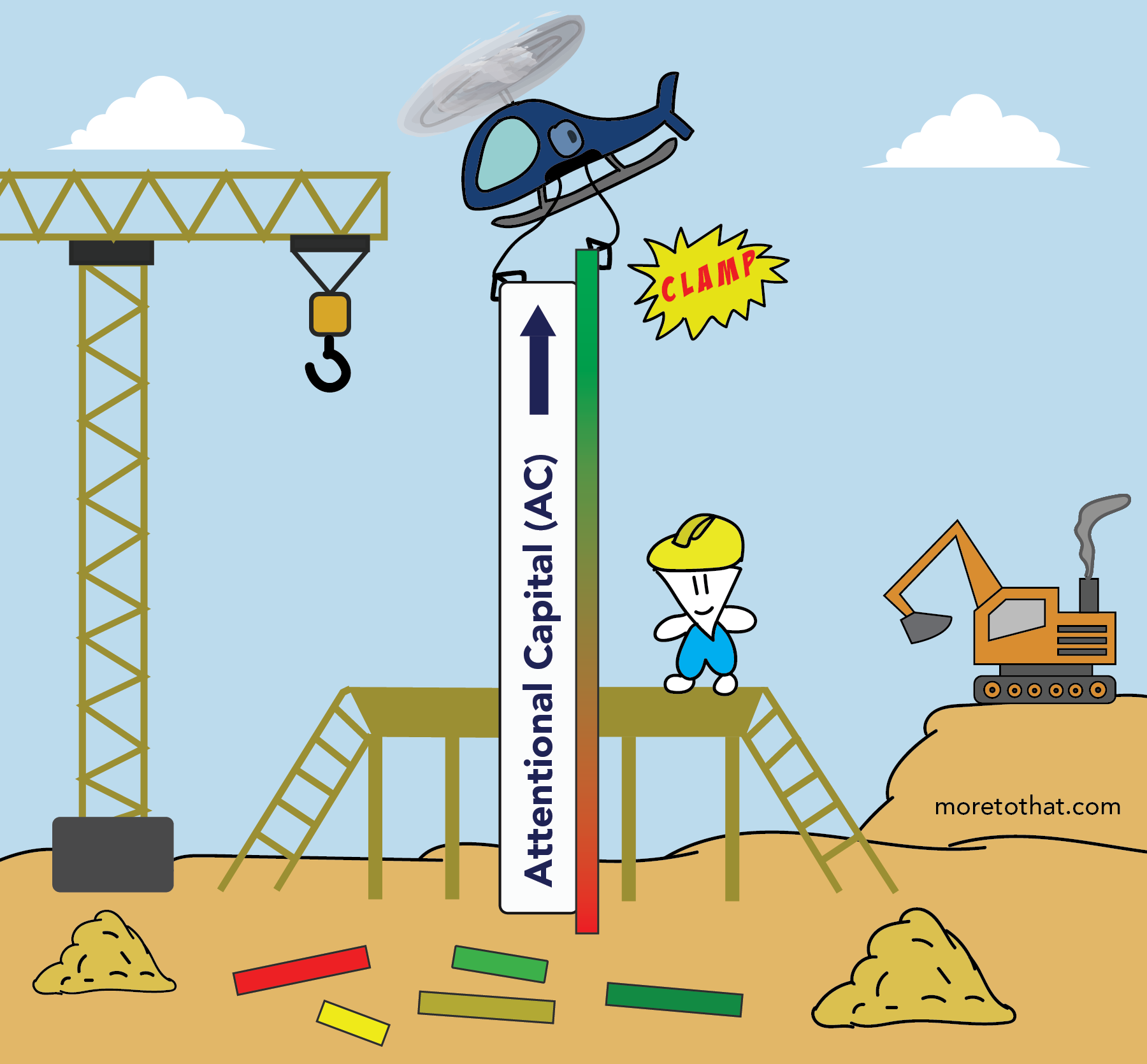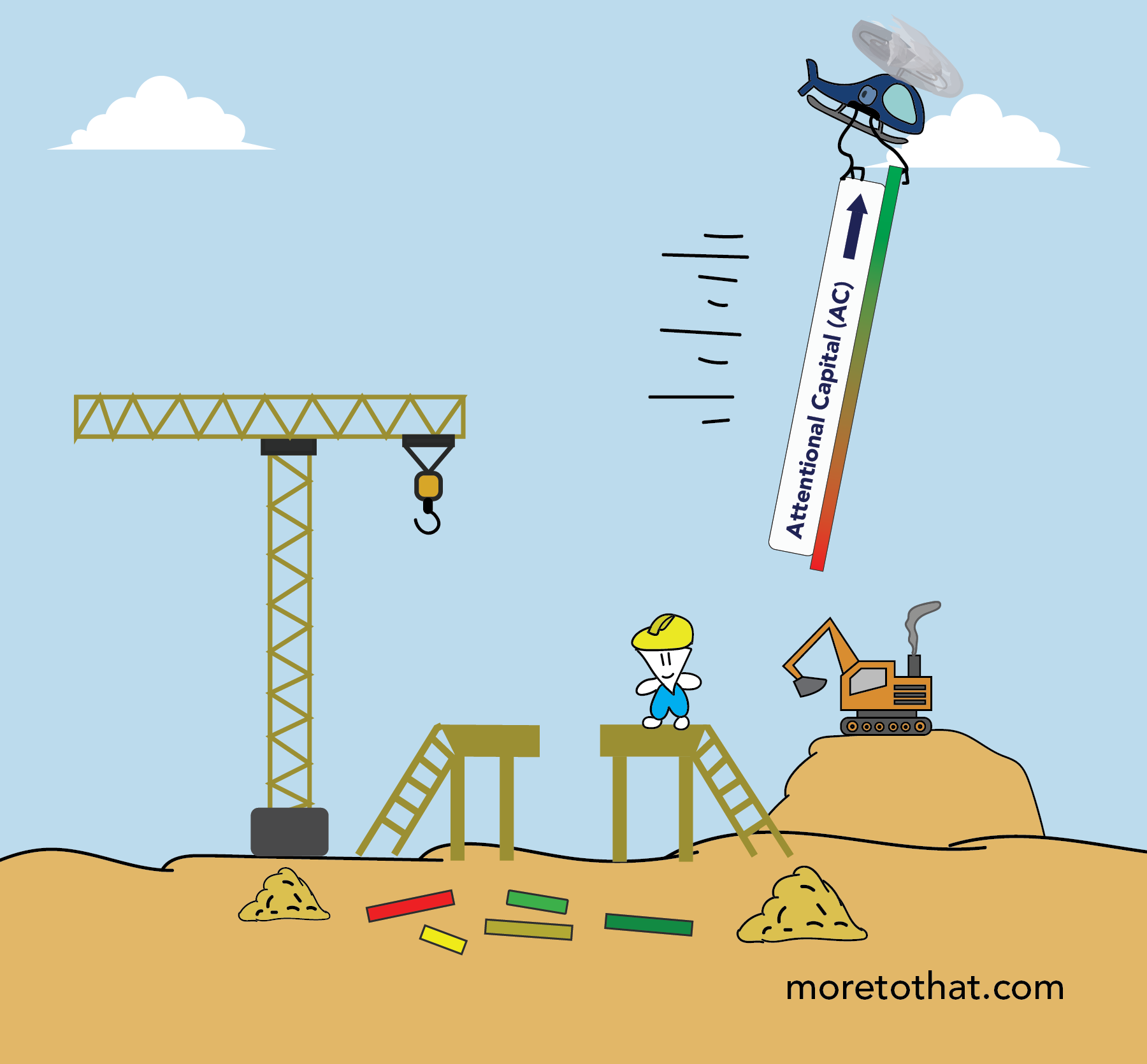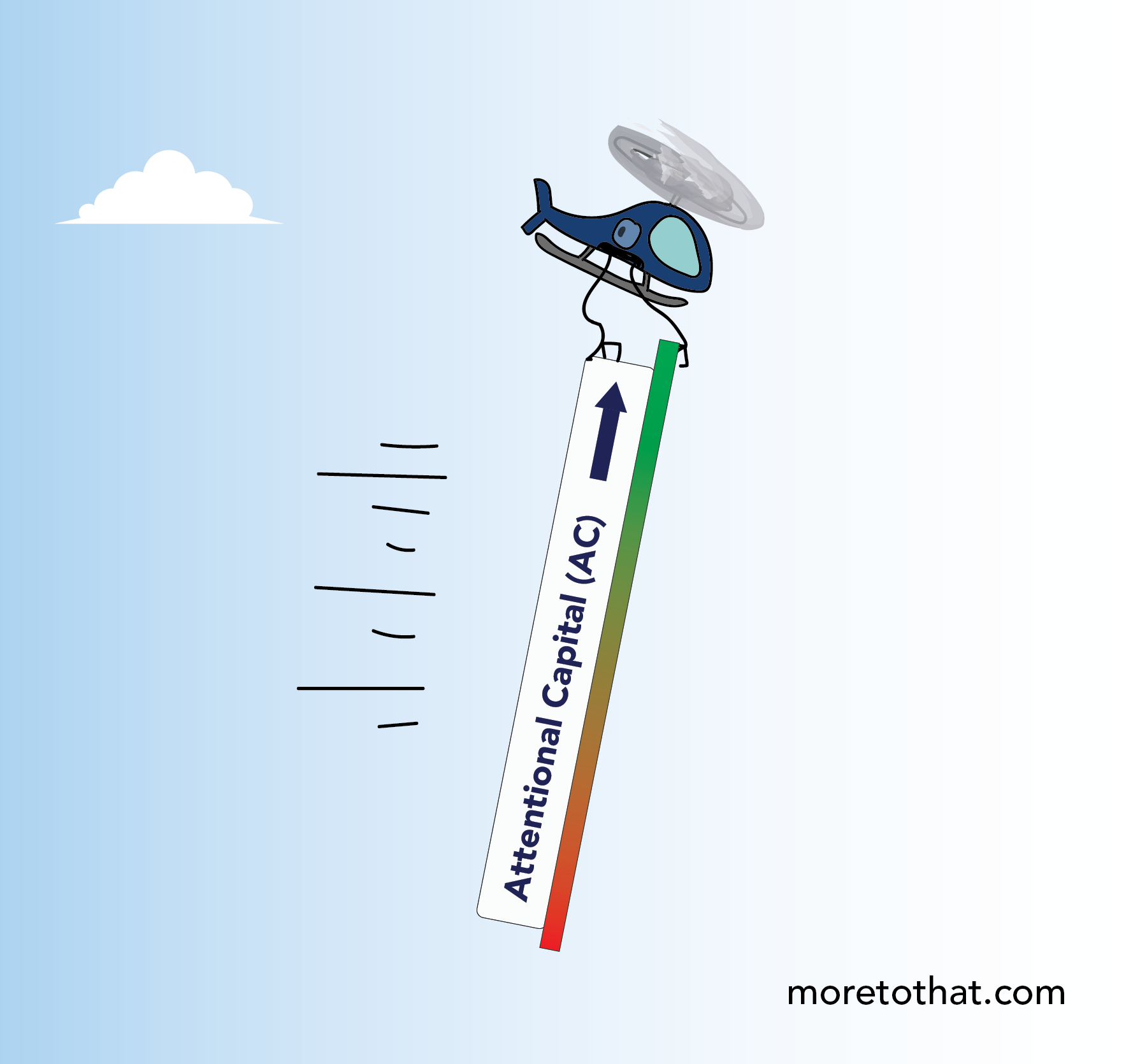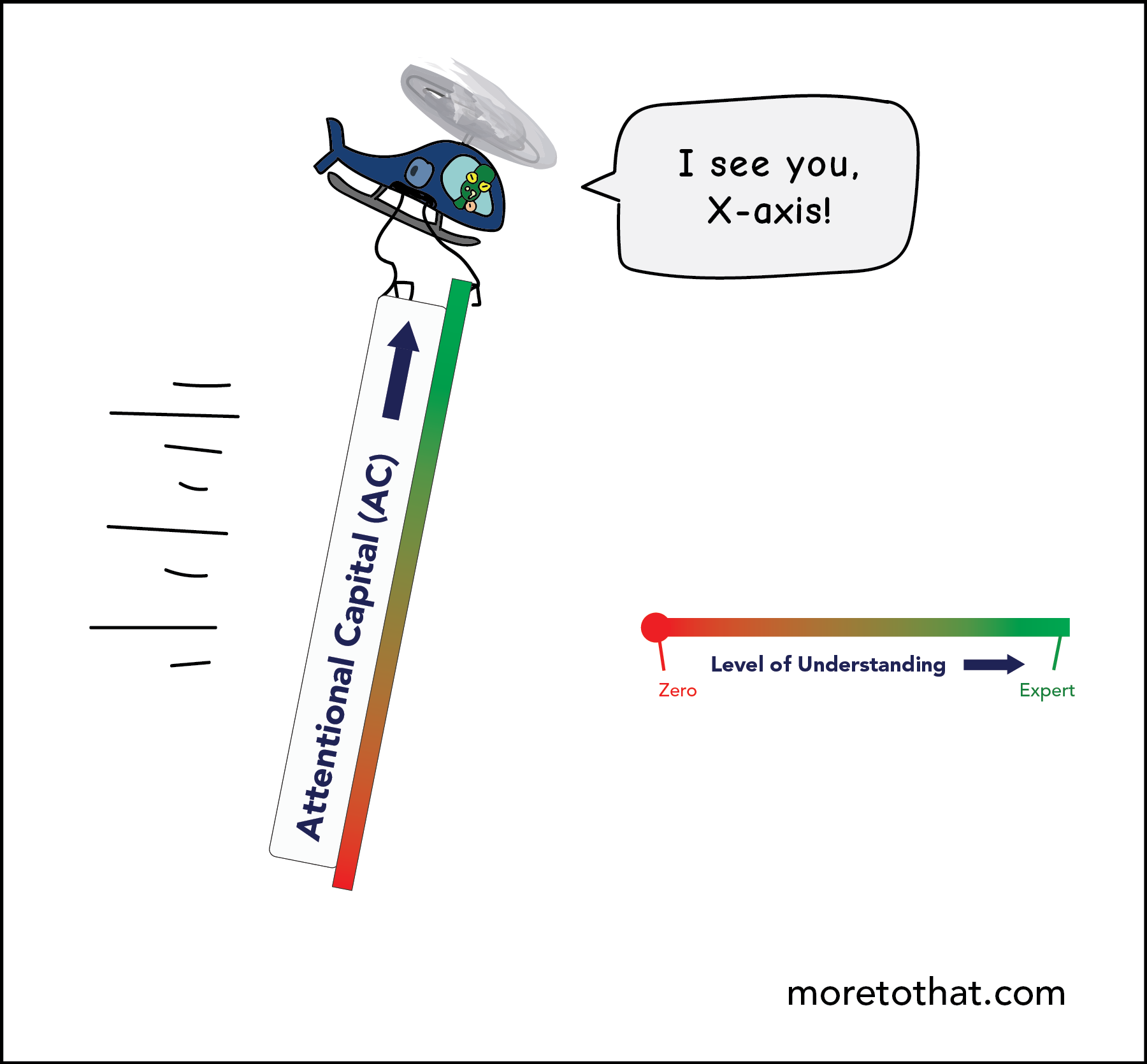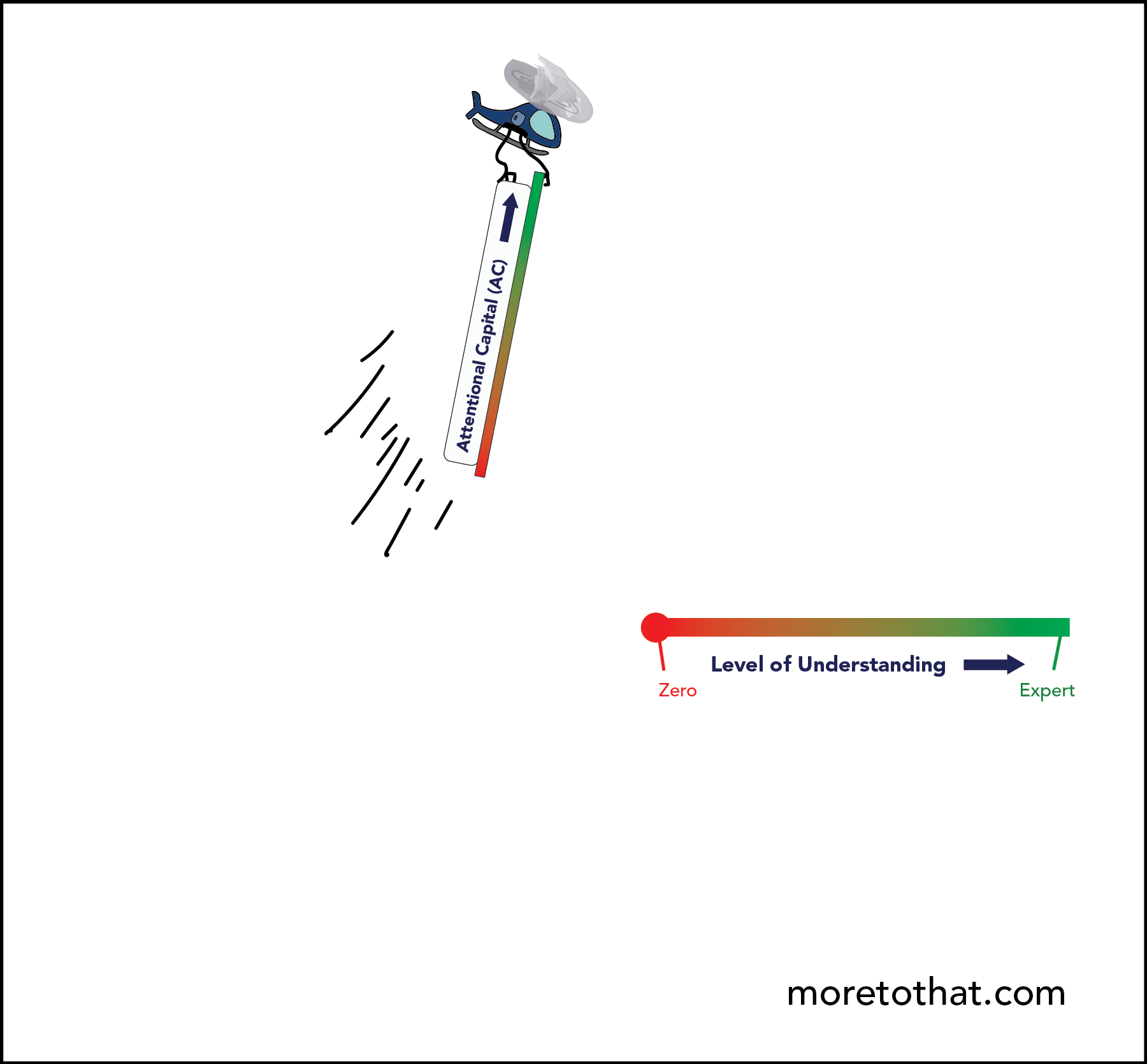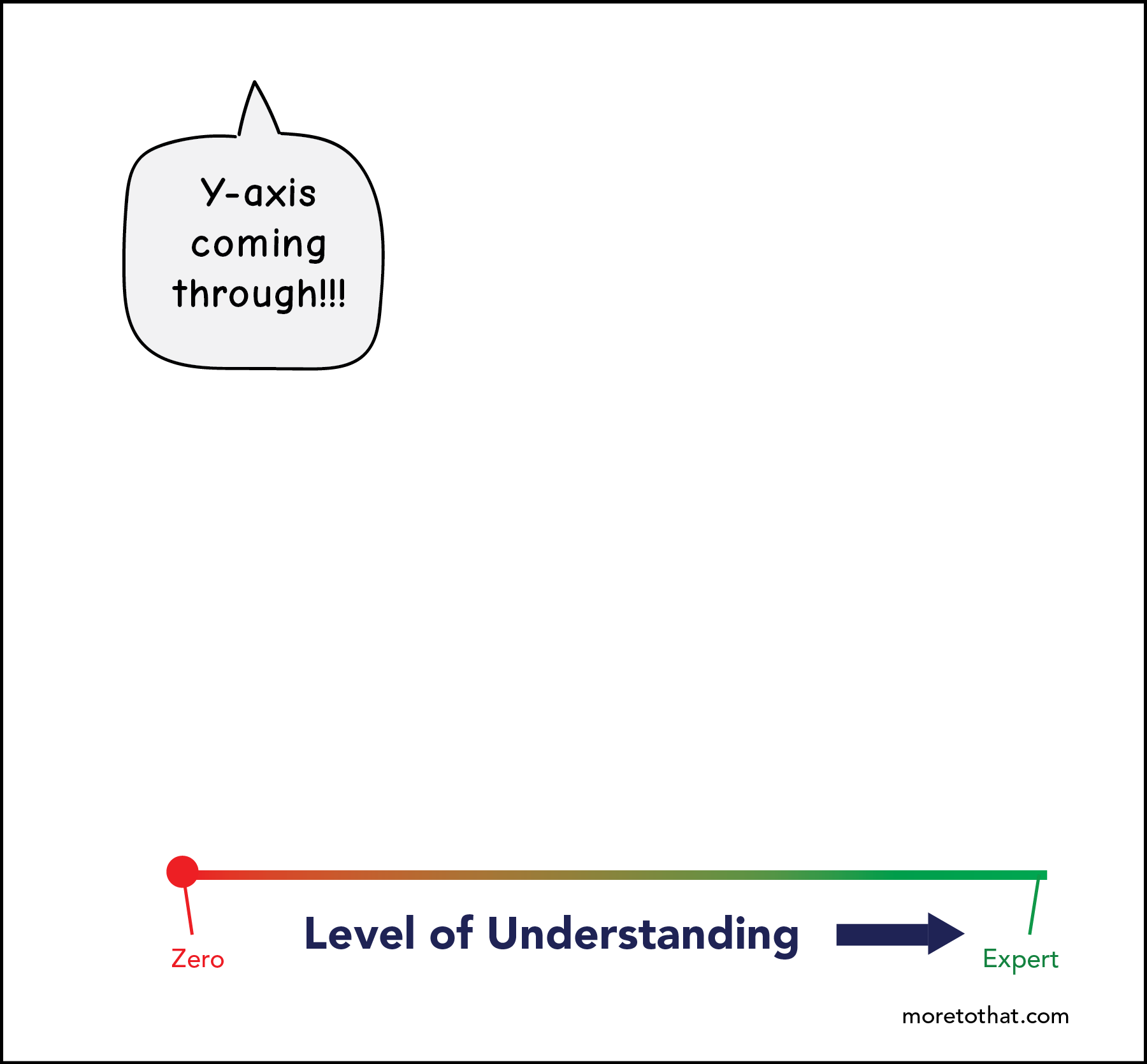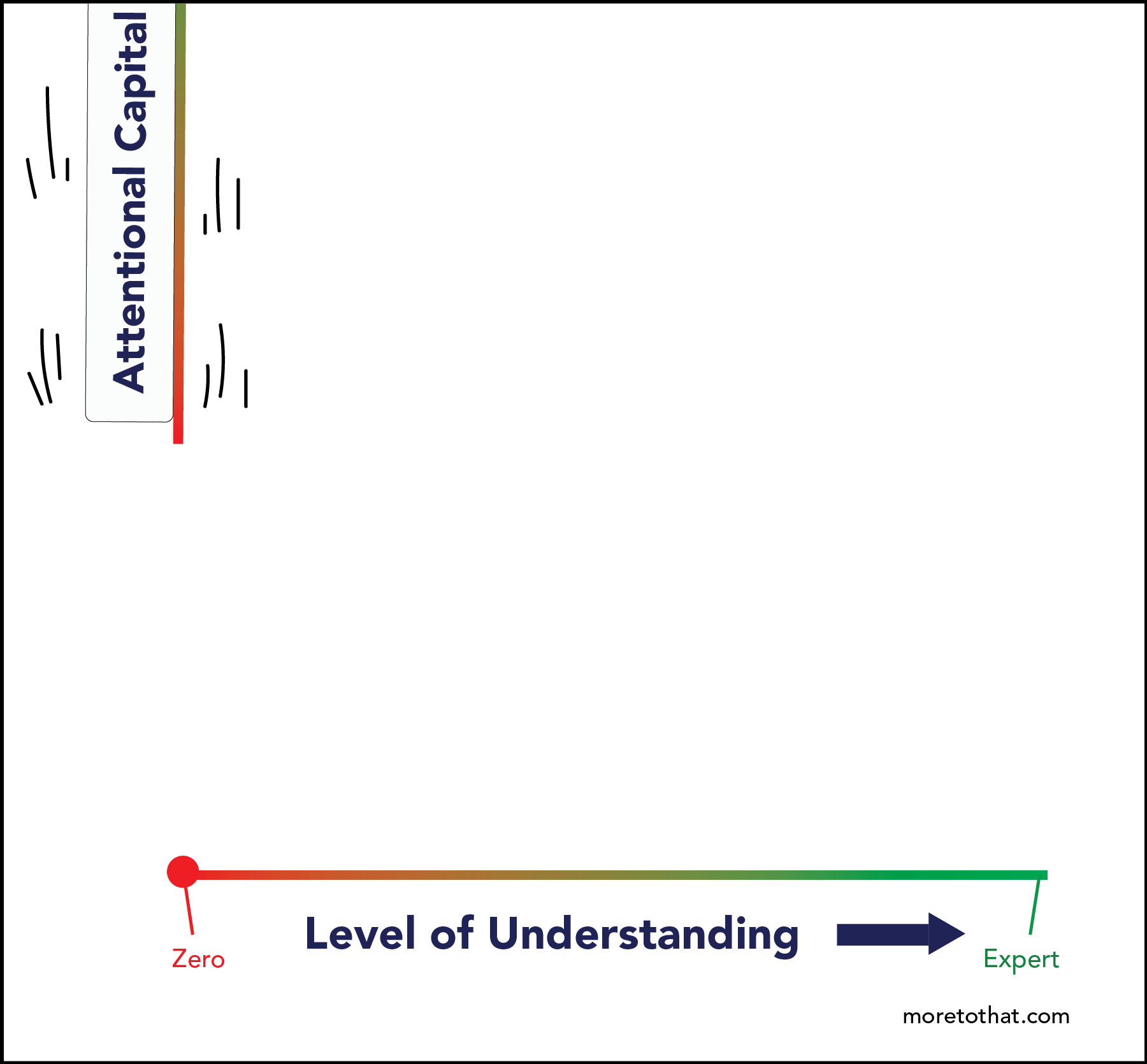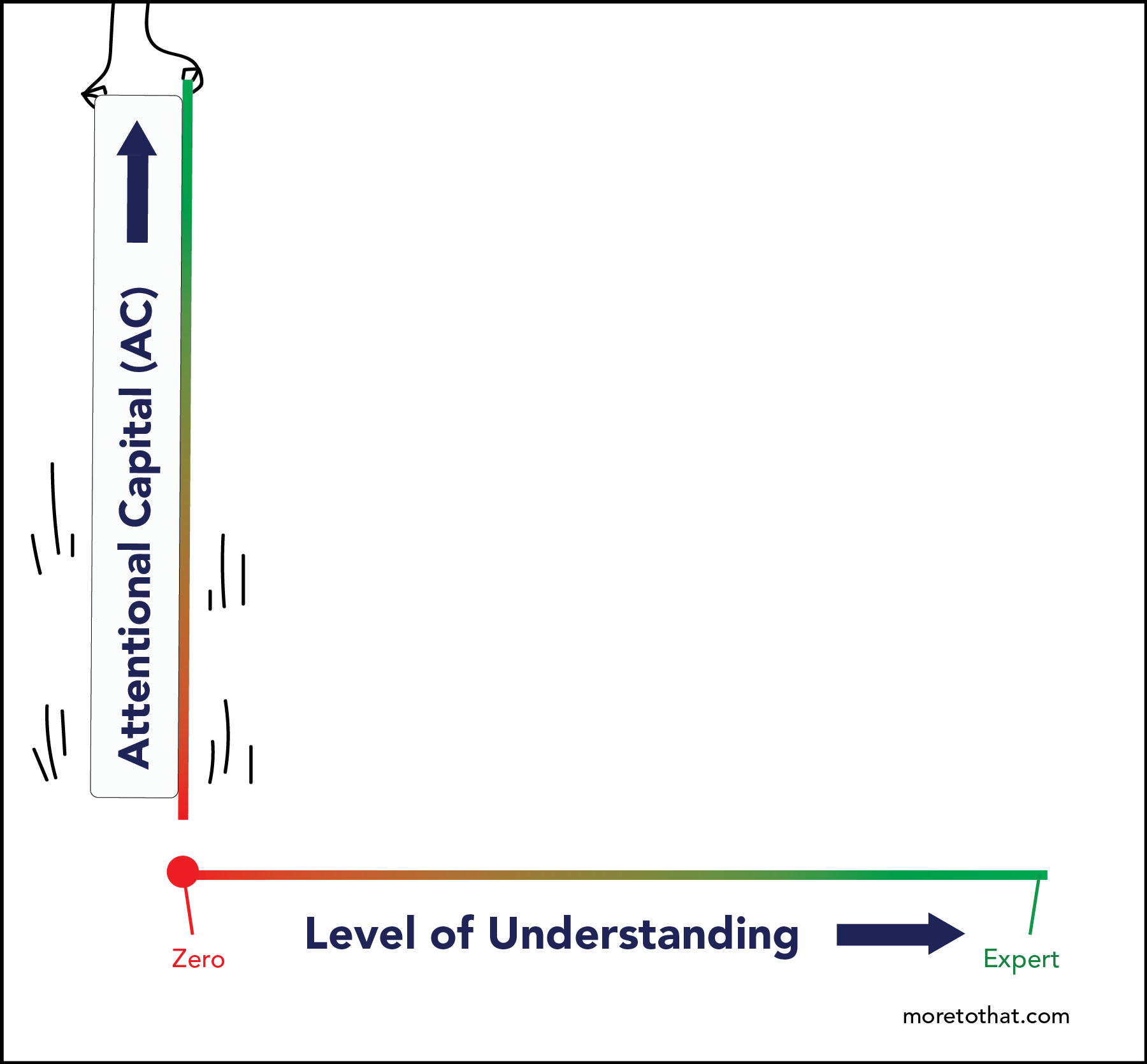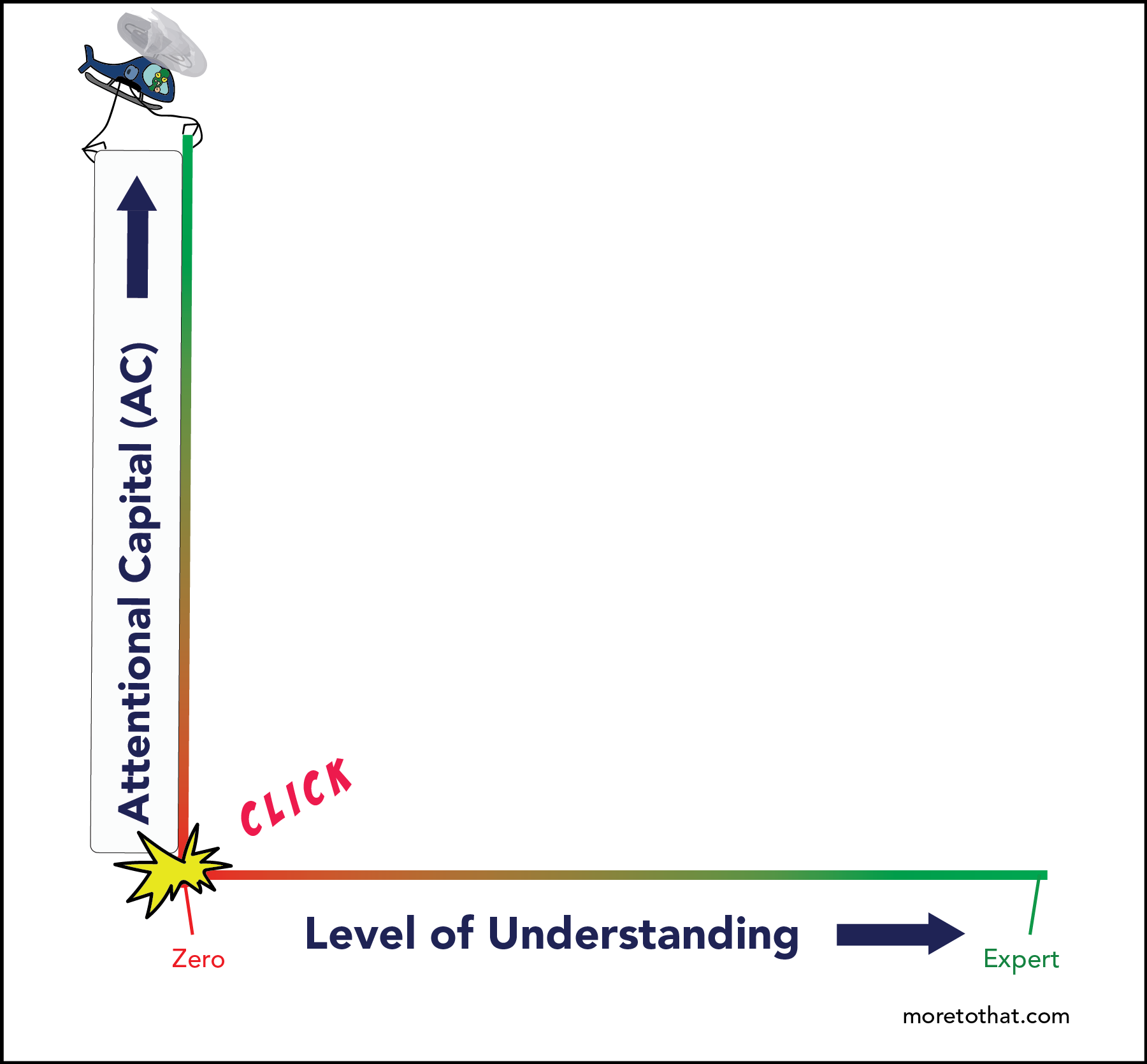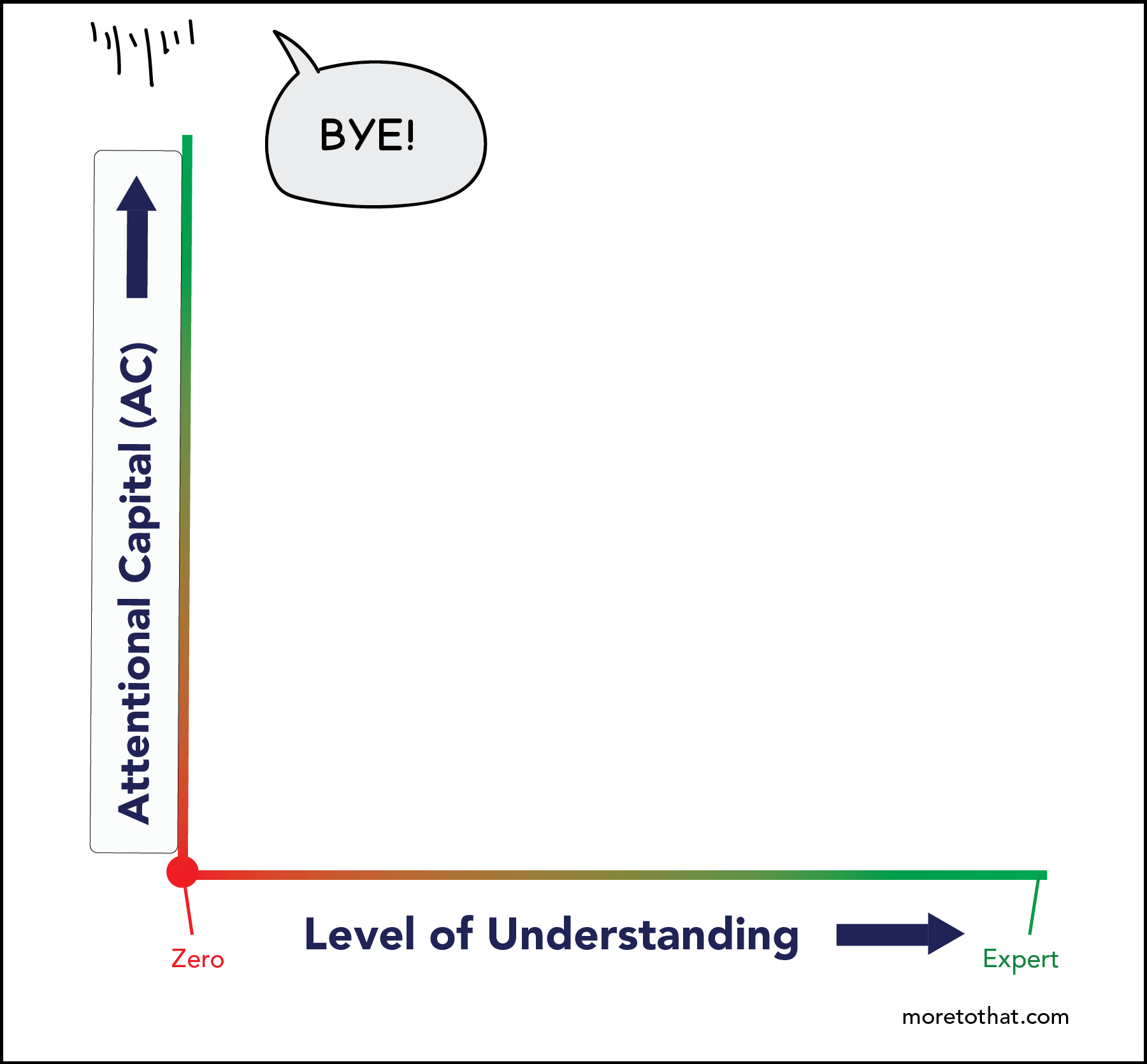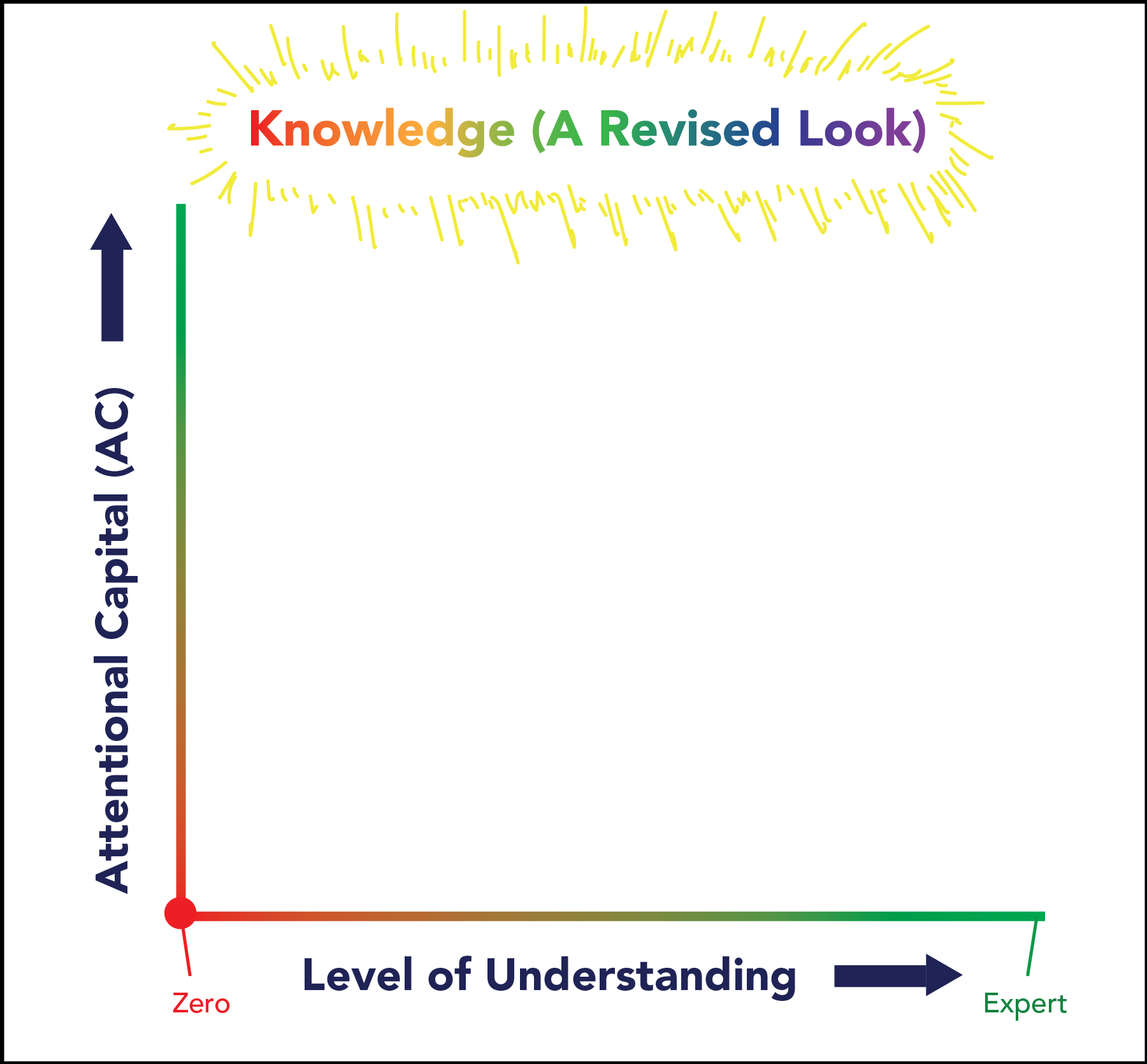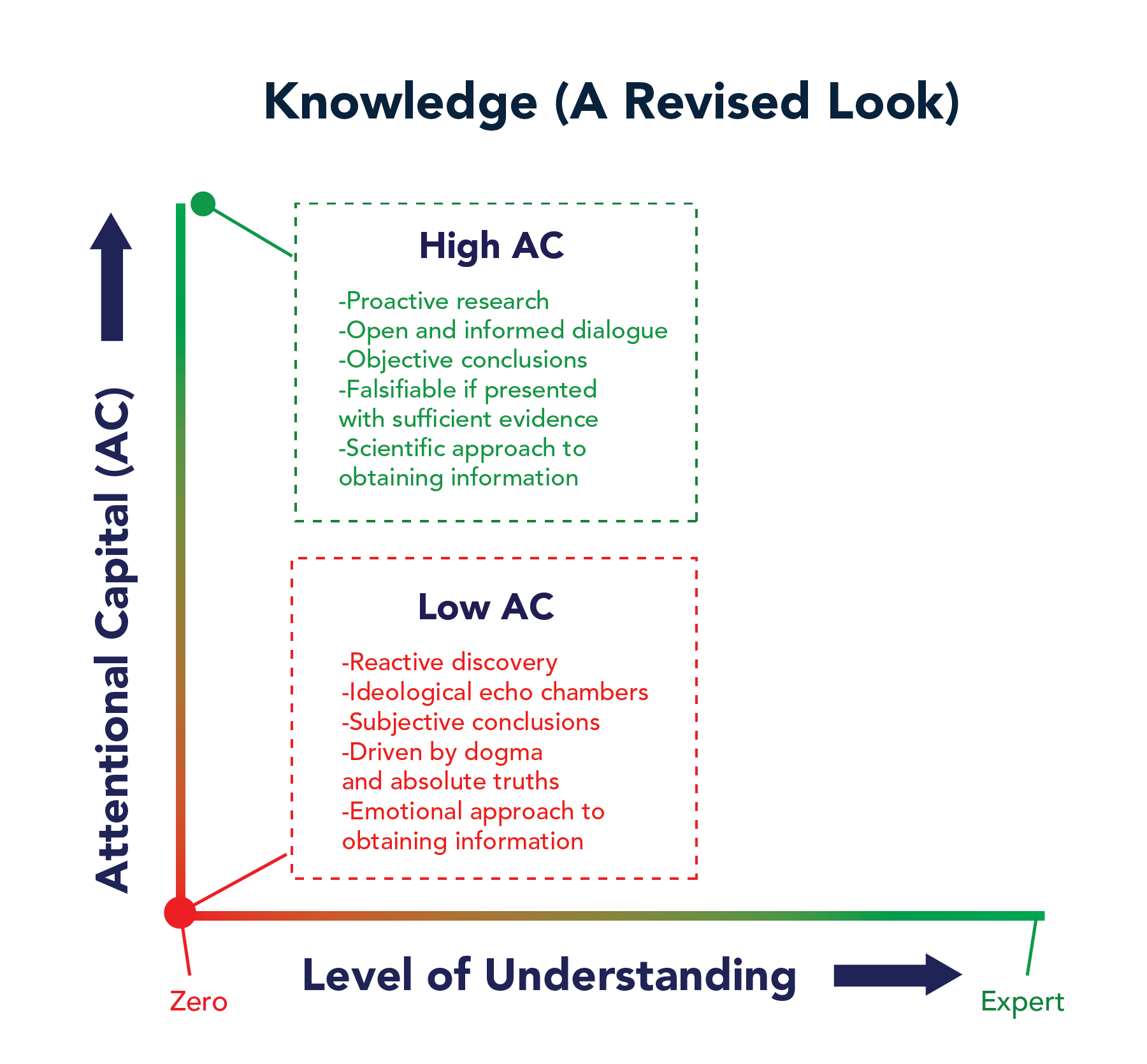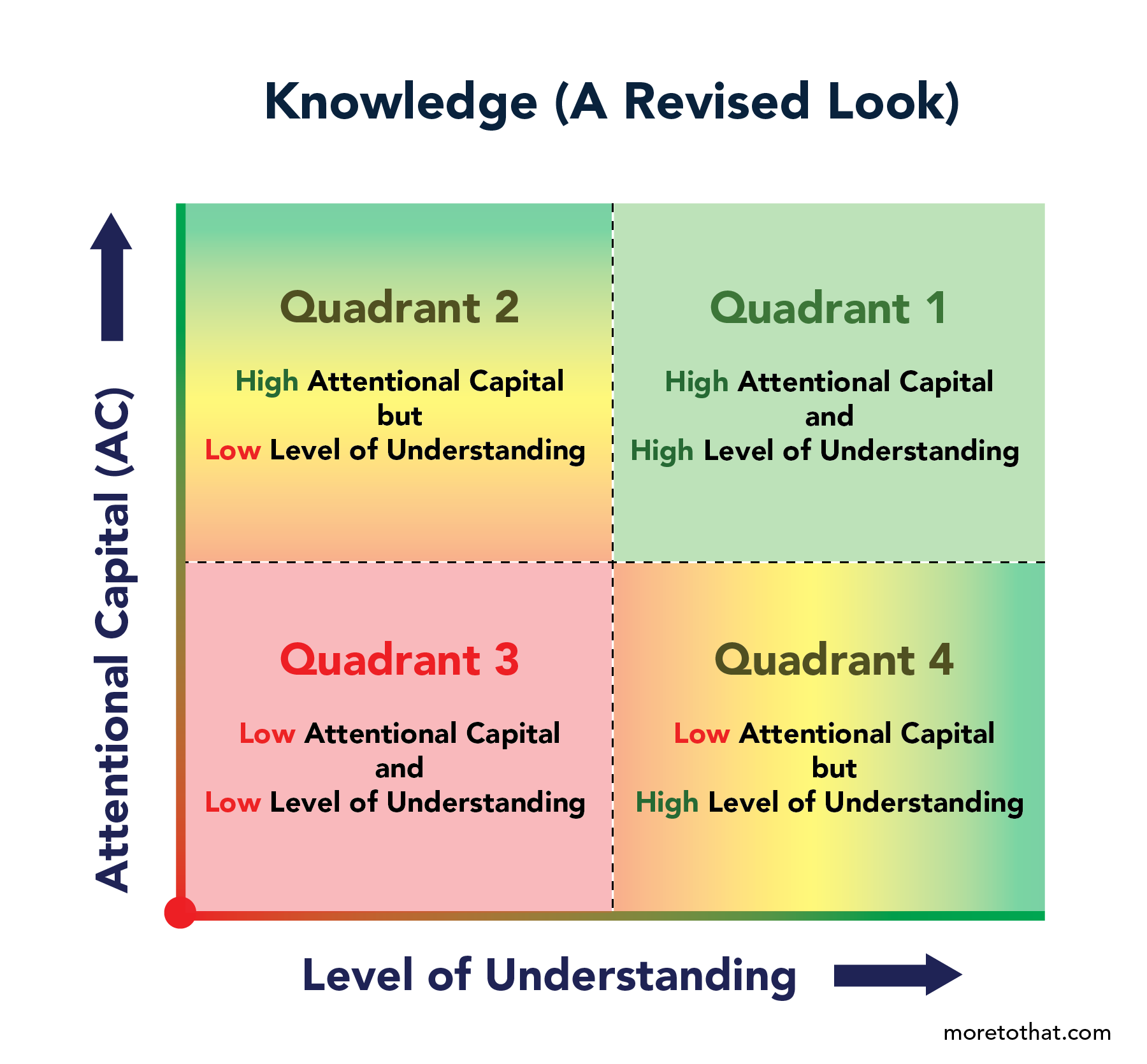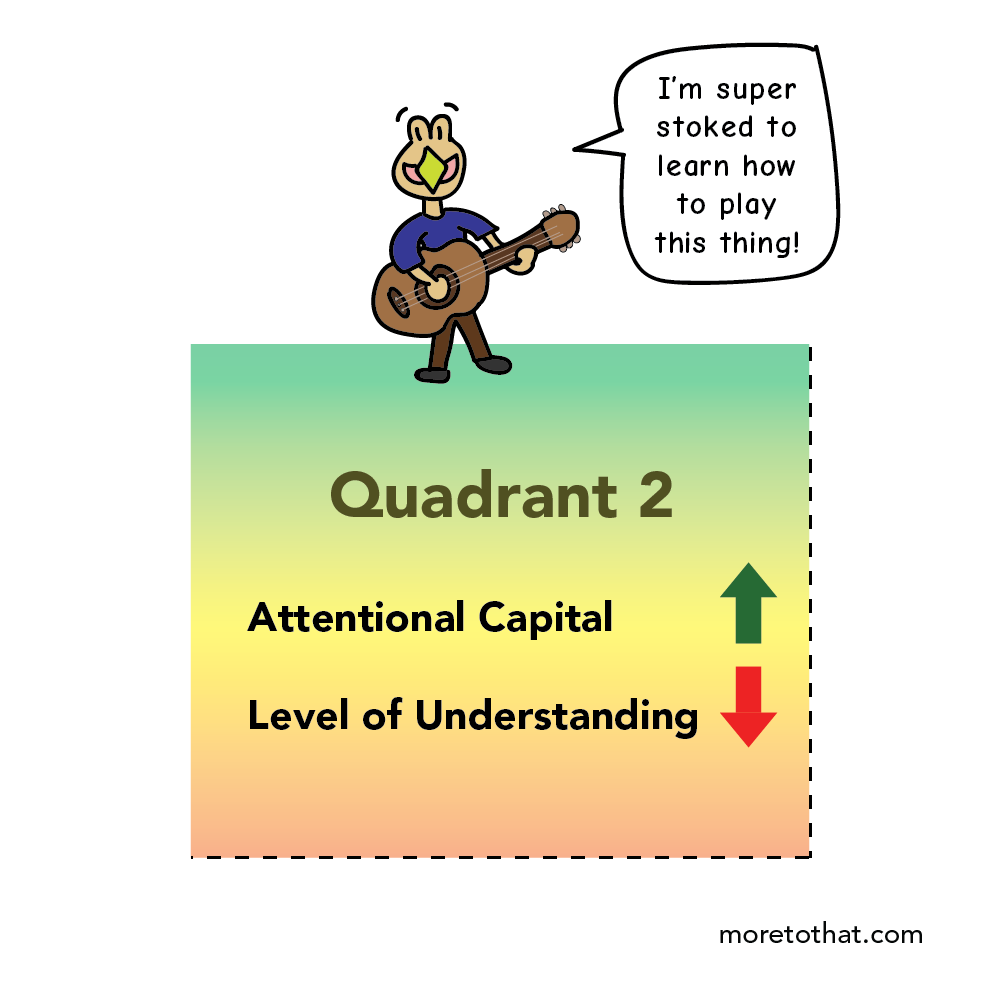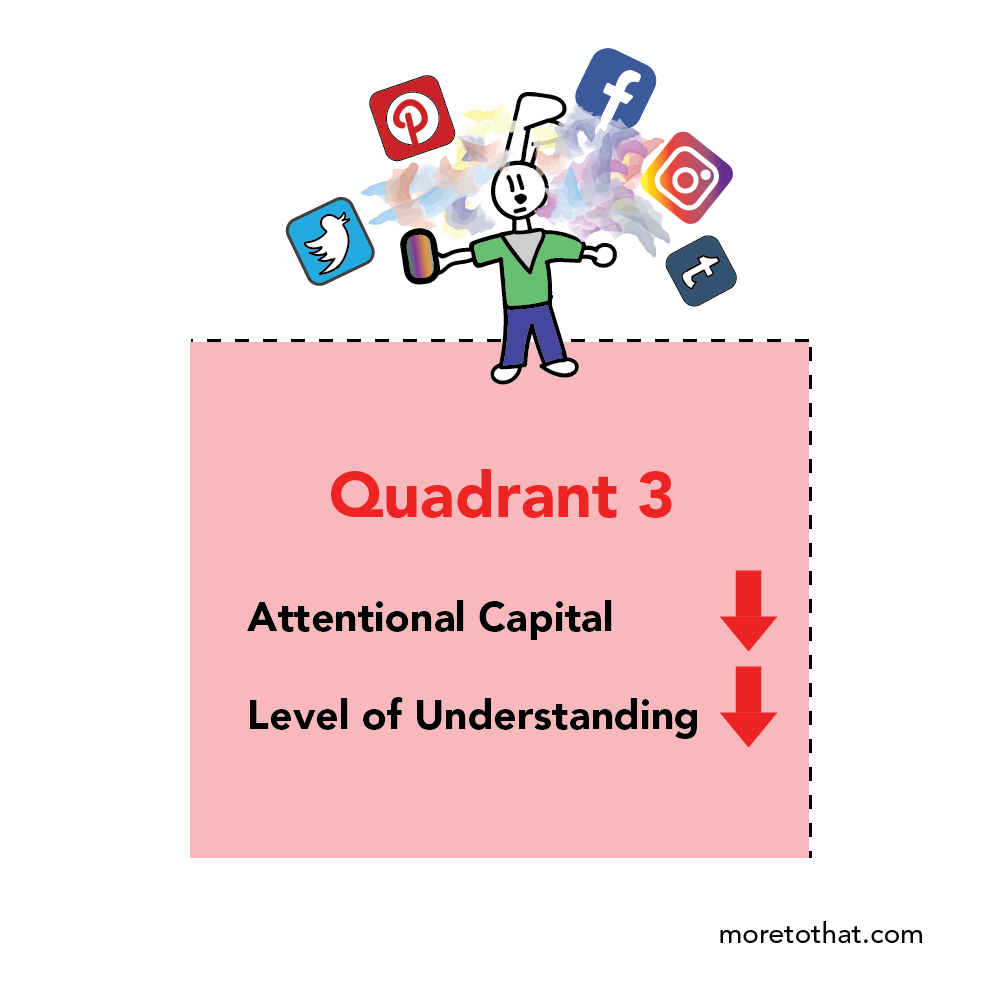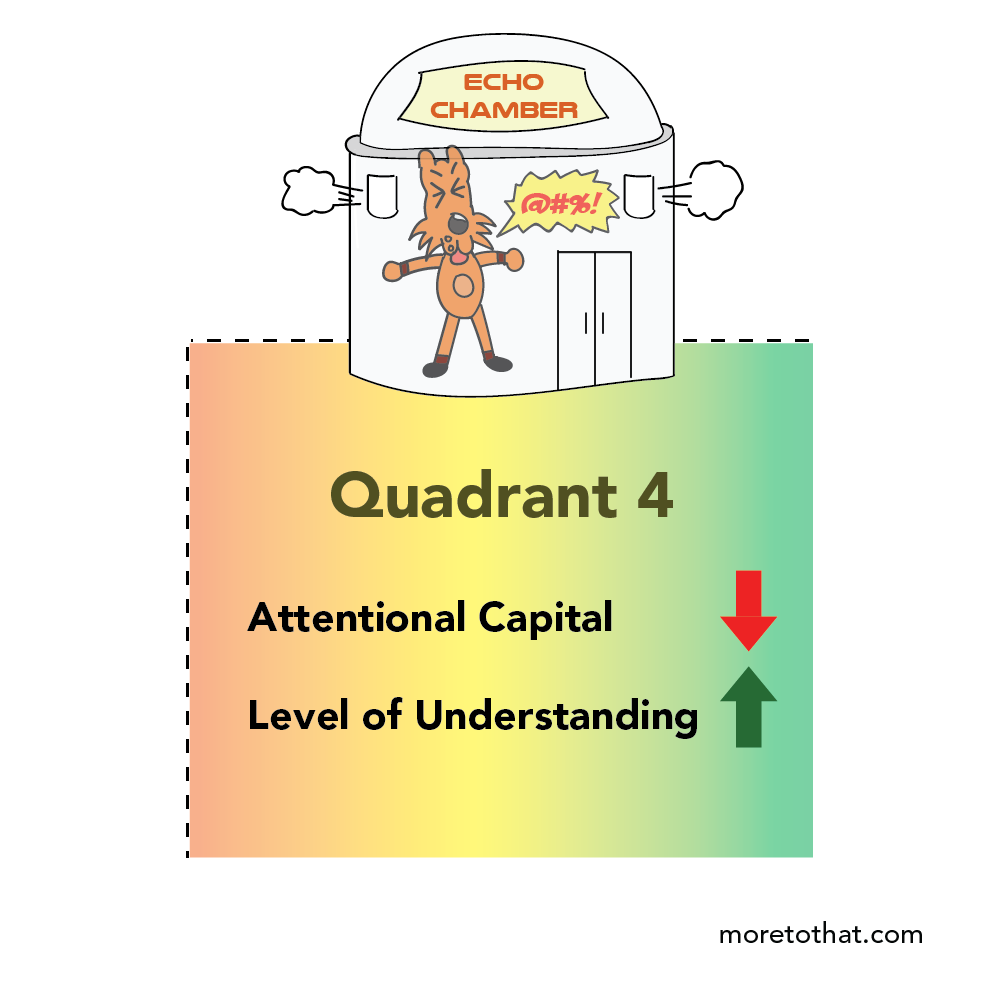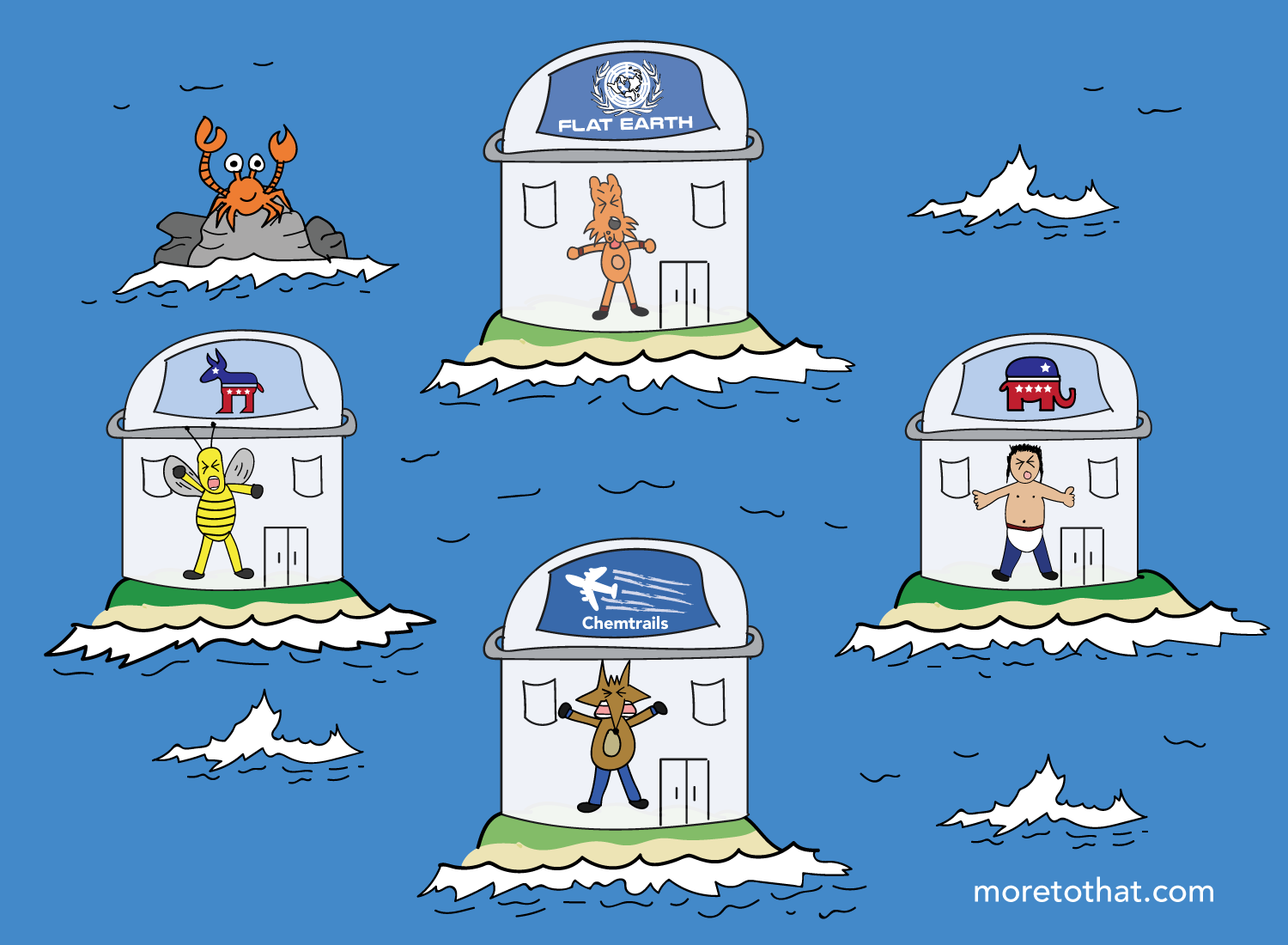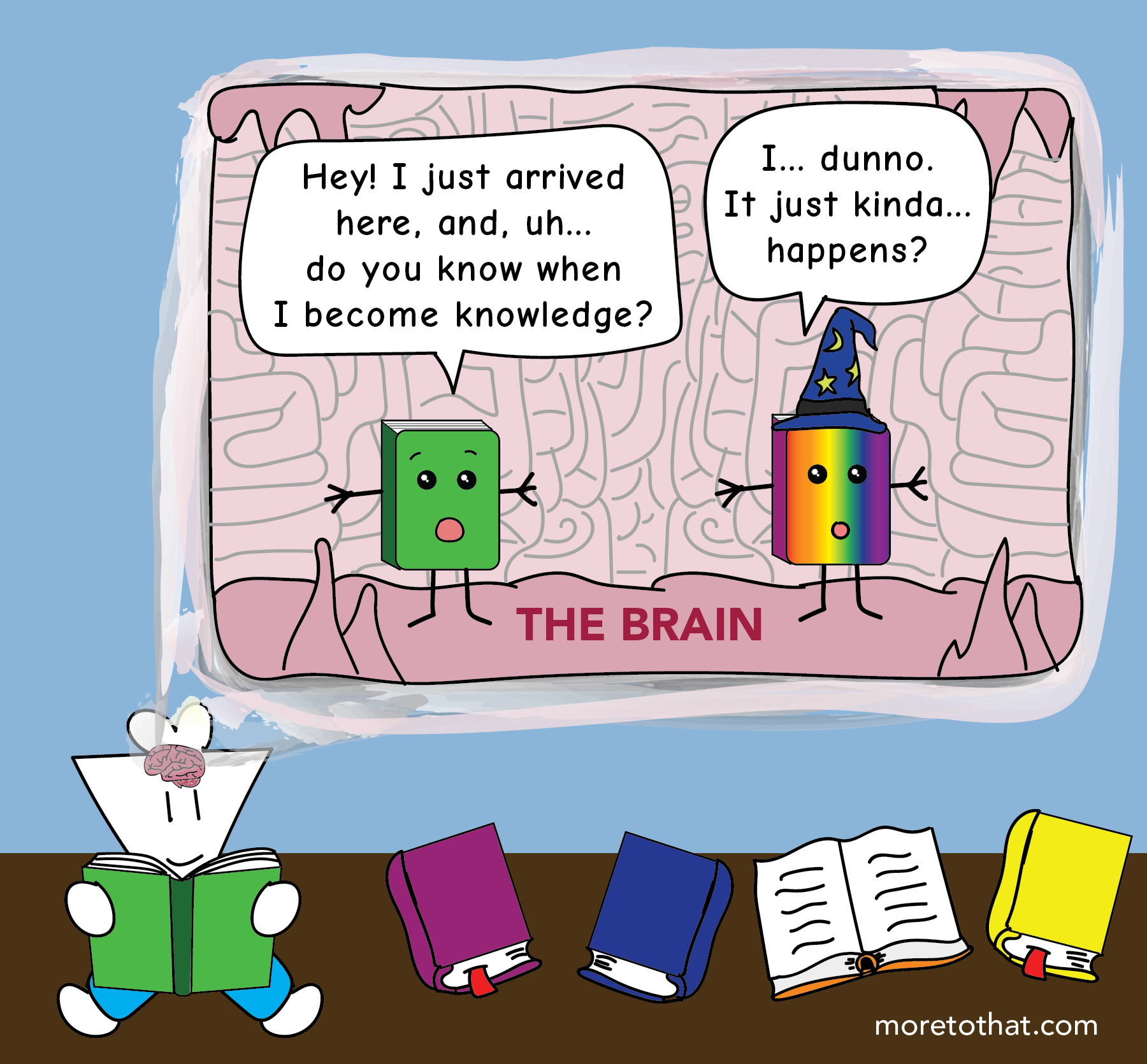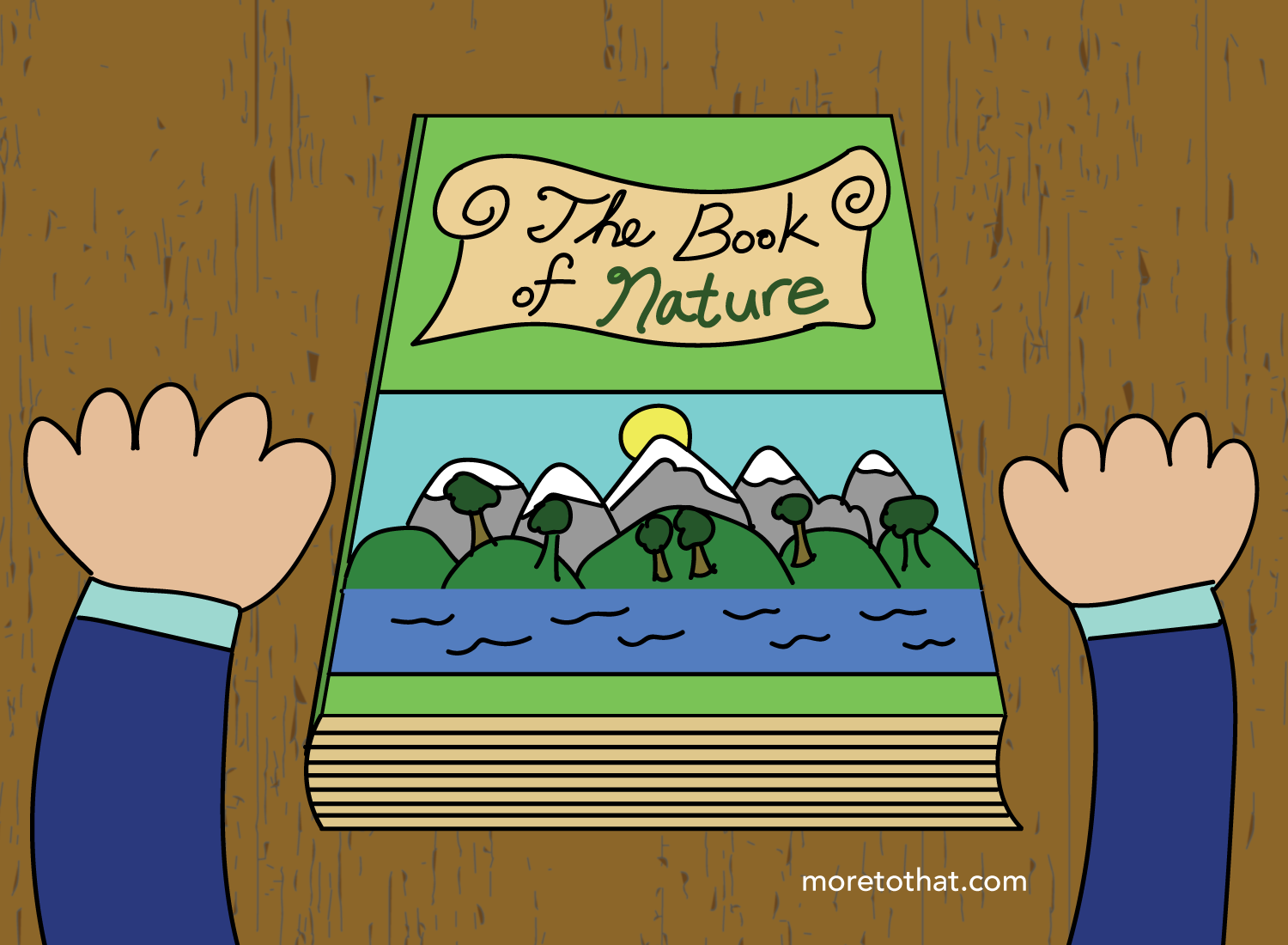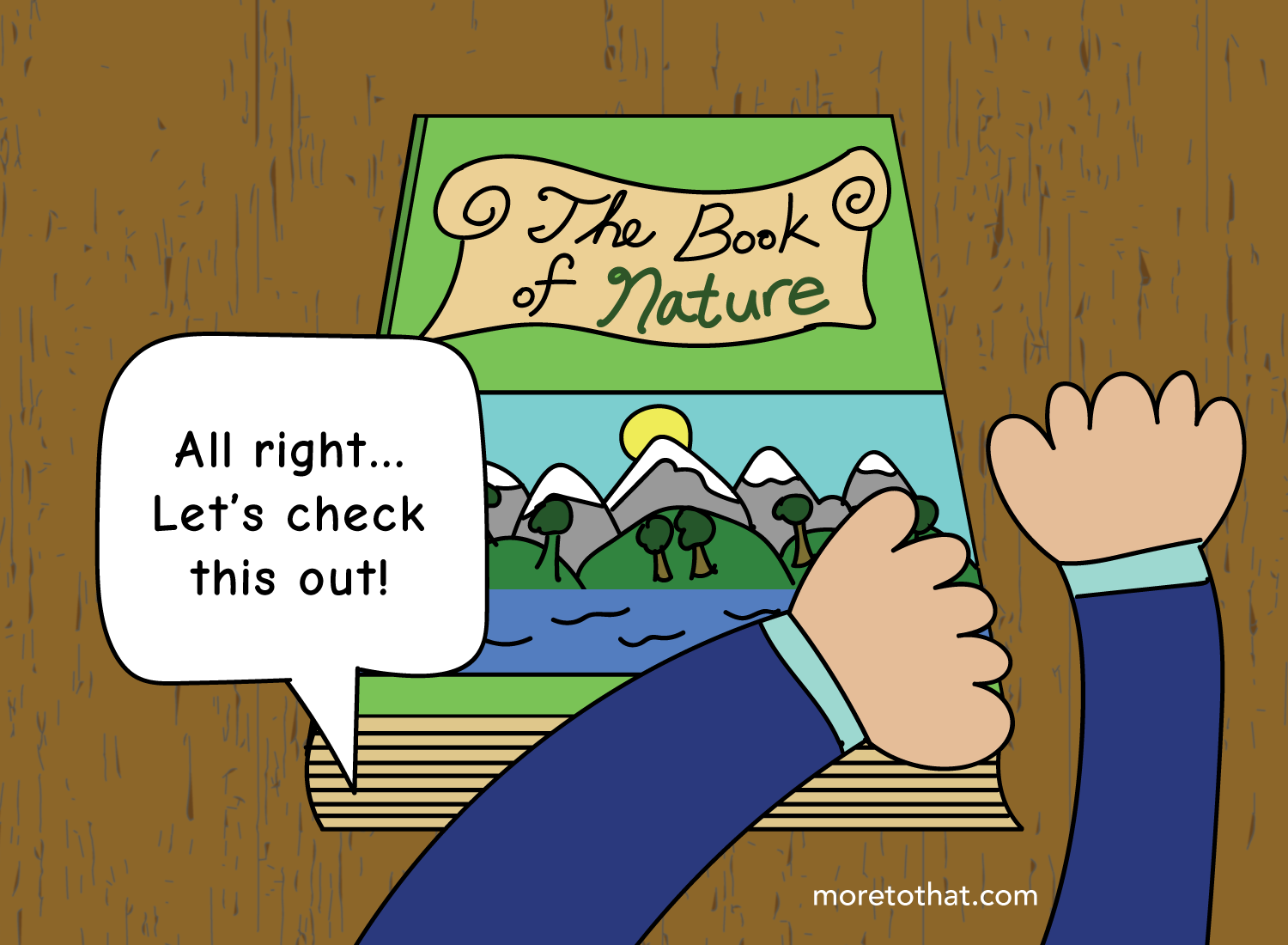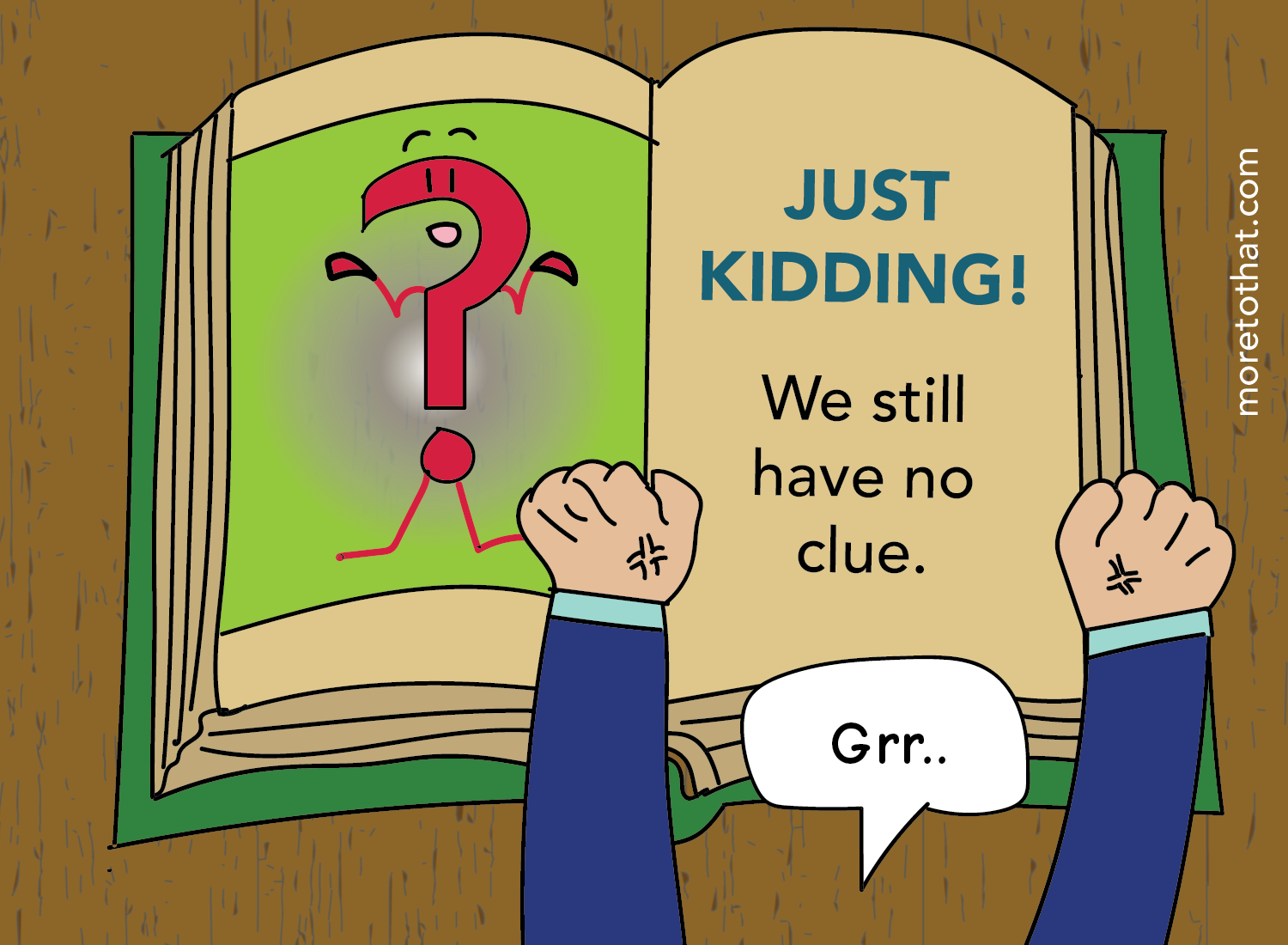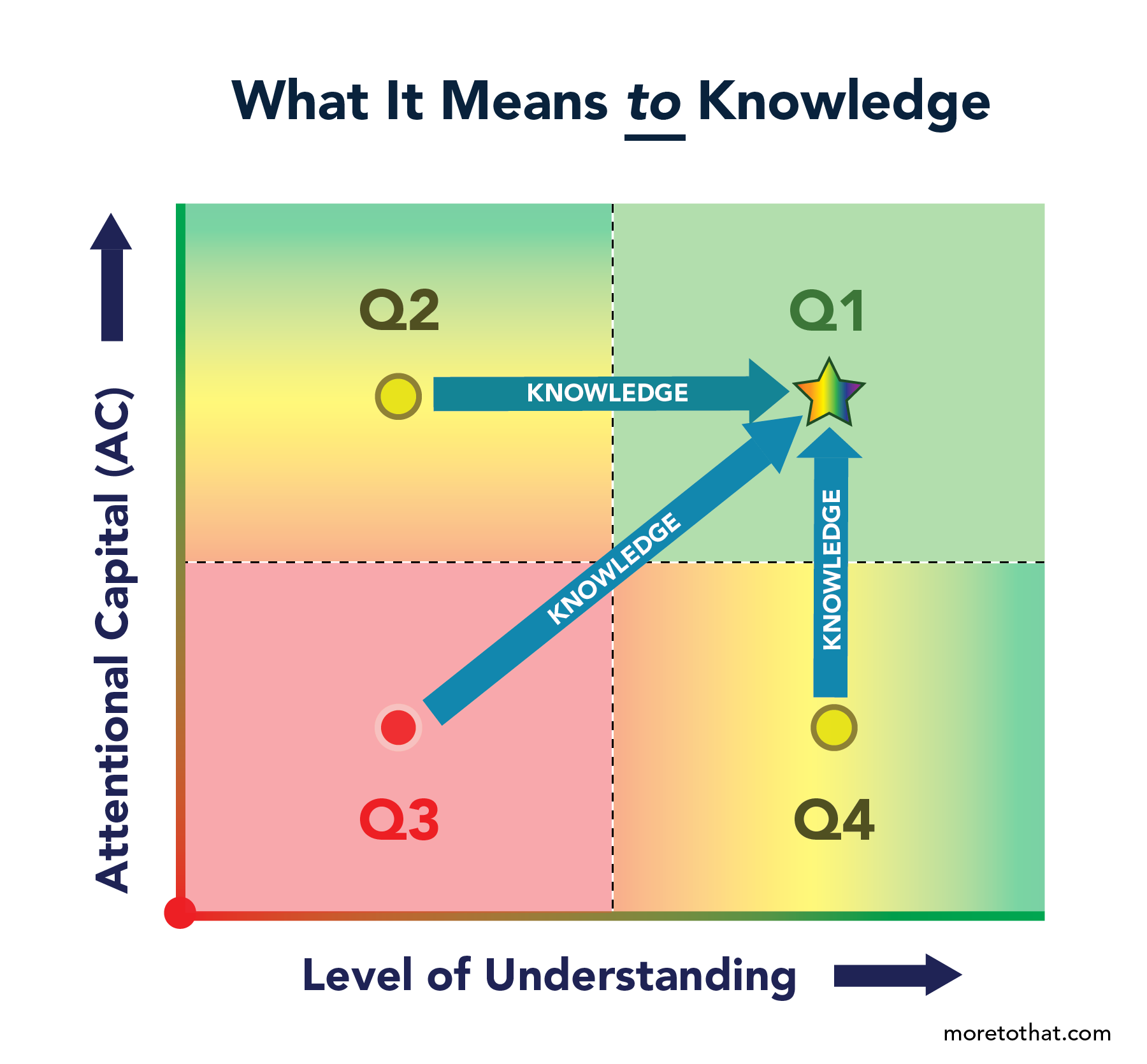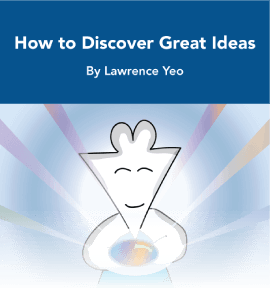Knowledge Is Not a Thing
We’re going to kick things off here with a nice mental exercise.
Say hello to our two friends, who will be the test subjects for our thought experiment:
While this neighborhood is a cool place to hang out, it’s not the best place for us to get down with science. So let’s transport these guys over to our research lab, where we have built two rooms that await their entry.
One will be assigned to Room A for the duration of this experiment, while the other will be assigned to Room B.
Shortly, the doors in front of them will open, and our friends will spend the next day in their respective rooms (don’t worry, there are bathrooms and lots of delicious food from Whole Foods in there too — we’re going to take good care of them).
As they wait to enter, they notice that there are signs posted on each of the respective doors as well.
On the door to Room A, there is a sign that lists eight topics of interest that will be addressed in this experiment:
On the door to Room B, there is just one topic of interest that is listed, but it is the topic that its inhabitant happens to be the most interested in of them all:
And at that moment, the doors swing open, and the rooms reveal themselves to our subjects.
Enter Room A.
In the center of the room is a nice, cozy chair that acts as a nice holster for one’s ass.
The rest of the room, however, looks like something from a sci-fi film.
The four walls surrounding the chair are large screens that respond to voice commands, and on these screens, a slew of information is already presented on them.
The information is organized like a news feed, with all the latest developments in each of the listed topics prominently displayed on the walls. There are informative videos on the various subjects listed, headlines of the latest news stories, and relevant think pieces by experts on each area.
However, there is no real categorical organization to them, so a story about AlphaGo Zero’s dominance in the Go world would be right next to news about bitcoin breaking some sort of price barrier, which would be adjacent to a piece about identity politics, which would be next to a short video about LeBron’s hairline, and so on.
Our friend has the ability to sort through the information as needed through simple voice commands, and can view related detail into any topic when necessary. He can switch topics at any time as well, but the information will continue to organize itself into that of a news feed. Room A’s inhabitant is excited to delve into this, as all the topics presented are of keen interest to him.
Okay, so that’s Room A.
Now let’s go to Room B.
The walls here are simply walls with a few whiteboards, so nothing inherently remarkable about them here. At the center of the room though, there is a nice chair, a desk, a computer, a notepad, and a small stack of books waiting for our subject.
He walks over to the desk to leaf through the books, and upon seeing the covers of them, his excitement bubbles at the brim of his brain.
These books happen to be the exact three books he wanted to read about bitcoin, its history, and how the technology works. He’s been meaning to get a hold of these books over the past few days, but now they are right in front of them for him to explore.
He then looks over at the computer, and there is a note tacked onto the monitor. It states that he can use the information from the books to learn how to set up a bitcoin wallet, learn what exactly is going on when he initiates a transfer, and understand how the underlying technology works. He could even try experimenting with some basic mining software on the computer as well.
Needless to say, he’s excited too.
All right. Now we’re going to give each of our friends the next 24 hours to be in their respective rooms. For purposes of this thought experiment, you can assume that they have the same level of information processing, same depth of attention span, and also have similar oscillations of focus and fatigue.
Okay, great. And they’re off!
As our two subjects work through the night, our team of super researchers here at More To That Labs need to come up with a system to measure the results of the experiment.
After hours of careful thought, deliberation, and highly mathematical modeling, we have come up with a hyper-sophisticated graph that will measure everything with intense statistical accuracy:
Eh… good enough for a blog post.
Let’s assume that prior to this experiment, both our subjects were 1’s across the board for all eight topics, meaning that while those topics sounded interesting to them, they knew little to nothing about them:
All right. We’re ready to measure.
A whole day has passed — the sun has set, the sun has risen, and is now ready to set again.
It’s time to check up on our friends.
We first speak with our subject from Room A.
He’s scoured through the enormous feed of information about his eight topics of interest, and is now fairly informed about all the latest happenings in each of the eight fields. He can tell you all the latest political developments, what music production software just came out, the latest news regarding CRISPR’s success in treating diabetes in mice, and so forth.
If you were to have a conversation with him about any of the exhibited topics, he can speak to what is currently happening in those areas, but will have difficulty drilling down into the why. A good way to look at it is that he can have a nice 15-minute conversation about any of the topics, but will fail to uphold a thorough, well-articulated, two-hour long conversation about any one of them.
Here’s how his level of understanding of the various topics maps onto our graph:
On average, he is anywhere from a low 2 to a low 3 in each of the topics (during the course of his research, some topics held his interest longer than others, hence the slight variations).
Now let’s check in on Room B.
He has read through most of the provided literature on bitcoin so he now has a solid foundation of all the history surrounding the cryptocurrency’s existence. He can explain why a decentralized payment structure is so important given recent banking downfalls, why encryption is so essential when it comes to money, why earlier “digital currencies” such as DigiCash failed, why miners are necessary to validate transactions on the all-important blockchain, and a bunch of other bitcoin-y things. He even had the opportunity to try mining for bitcoin himself (although he failed to get any) and also had the experience of sending and receiving the currency through his wallet as well.
He can now hold a legitimate two hour conversation about bitcoin as a technology, and can even provide his own detailed and well-constructed opinions of its future as well.
Here is what his graph looks like:
He is anywhere from a low 5 to a high 6 on the topic of bitcoin now, and that bar will only get higher as he spends more and more time studying it.
Room A provided its subject with the ability to cover a wide breadth of topics, but only achieve a shallow understanding of each of them. Room B, on the other hand, provided its subject with access to only one topic, but achieve a deep understanding of that one specific area.
We thank our lovely friends for their time, hook them up with lots of goodies and Amazon gift cards, and wish them well.
Now, back at More To That Labs, we take off our lab coats, gather our data, and collectively take a deep breath. All of this research and time was spent in pursuit of one single question.
Viewing the results of Rooms A and B, we ask ourselves:
Which of the two is more knowledgeable as a result of this experiment?
Before we go down this path, I will admit that on its surface, this can seem like one of those annoying questions in which the only answer to it is, “Depends on what you mean by (fill in the blank).” Some close cousins to this question are “Who is more talented?”, “Who is more beautiful?”, “Who is more rational?”, or any other question in which the prescribed adjective can mean a bunch of different things.
So we can’t go into the details yet until we first define what knowledge is.
The dictionary is a good starting point here, and since my father once disappointingly gave me a thick red Oxford dictionary as a Christmas present while other kids happily received toys, let’s use Oxford’s version to pay homage to that memory:
(1) awareness or familiarity gained by experience of a fact or situation
(2) facts, information, and skills acquired by a person through experience or education; the theoretical or practical understanding of a subject
At first glance, the two definitions above sound pretty similar… until you realize that the whole experiment in the post so far is pretty much a straight delineation between the two.
The key difference between the two definitions of knowledge is that one focuses on (A) the general awareness of information, while the other emphasizes (B) the focused acquisition of information.
Room A was designed to match the first definition of knowledge. It’s a room in which an endless feed of happenings are displayed to you, making you generally aware of these facts’ existence. A flurry of information is presented all at once, and it is up to you to react and ultimately decide which tidbits are to be rewarded with your attention. There is a wide breadth of knowledge distributed in this room, but you will tend to gravitate to whatever information is packaged nicely to your tastes.
This room, of course, is analogous to the way in which many of us are currently introduced to new information. We visit platforms that herald themselves as distributors of knowledge (e.g. Facebook, Twitter, YouTube, news aggregators, etc.), and we have immediate access to almost everything we would like to know about any particular topic. The range of facts and information that can potentially be made aware to us is breathtaking. However, it is this very immensity that leads us to displace focus, as we tend to enter these platforms without a specific goal in mind. All we know is that we’ll become aware of something that will pique our interest, and that becomes the starting point.
It’s like entering a grocery store without knowing what you specifically want — all you know is that you want to walk out of there with some type of food. So naturally, the people handing out delicious samples will grab your attention and the food with the best packaging will end up in your cart.
Room A is designed to provide you with information, then have the information itself raise your curiosity towards it. Curiosity no longer becomes the starting point to your journey. Instead, it is relegated to a reaction you have when you are presented with well-packaged information.
Room B, on the other hand, was designed to match the second definition of knowledge. It’s a room that was built around the highest point of curiosity for its inhabitant, which in this case happened to be the topic of bitcoin. Not only were there books for the subject to dig through, there was also the opportunity for him to apply that information as well.
The starting point of this journey did not arise from the availability of information itself, but rather from a focused, curious state of mind.
Room B acted as the store of resources he needed for curiosity to get to work. And when you combine curiosity with a sense of diligence, that’s when we get a really awesome process called education:
Education is a kinetic form of learning, whereas awareness is a receptive form of it. It requires a focused acquisition of information through sustained habits and practices, whereas you can become aware of something simply by being in the right place at the right time. And most importantly, education allows for the application of learned information, which is the ultimate way to transform it into knowledge.
So now that we have parsed through the two rooms, let’s revisit the question again:
Which of the two is more knowledgeable as a result of this experiment?
Although there is a clear delineation between the ways in which our friends acquired knowledge, here’s the thing. The standard definition of knowledge puts what we know on a singular spectrum, with a zero-level of understanding on one end and expertise/mastery on the other (with education driving movement on the spectrum from left to right):
The problem with this line is that it doesn’t factor in the processes we use to obtain our information. Information obtained through shallow awareness or deep learning are both considered pieces of knowledge on this extremely wide spectrum. Simply being aware of the existence of something already puts you in the game.
I’ve realized that there is something super important that is missing from how we define knowledge, and it is the quality of attention that is paid for the pursuit of information. This points to the process used to measure the depth and quality of how we arrive at a piece of information.
For purposes of this post, let’s use the term attentional capital (“AC”) to loosely quantify this concept. Here’s the official definition based on the super-made-up More To That dictionary of terms:
Here are some examples of situations with high and low attentional capital:
High AC: I obtained this information through proactive diligence and focused research.
Low AC: I obtained this information by reactively coming across it on my social media feed.
High AC: I have tested my thoughts and findings through conversations with other individuals.
Low AC: I have formulated my conclusions on my own accord and have kept them to myself.
High AC: I have structured my ideas using objective and highly testable sources, and they are falsifiable if presented with sufficient counter-evidence.
Low AC: I have structured my ideas using subjective and dogmatic belief systems, and they are absolute truths.
In order to paint the full picture of knowledge, we need to add attentional capital as another dimension of depth to illustrate the “how” behind what is known.
And the best way to do this is with a bit of grade school math, where we place a new axis that is perpendicular to the spectrum of understanding we drew out earlier. Thankfully, we have an in-house construction crew that can help us with this endeavor:
Wow, I didn’t realize that adding another dimension of depth took so much work. I promise to never, ever take a Y-axis for granted again.1
Okay! Now before we proceed further, let’s briefly remind ourselves of the spectrums that are represented on both axes:
Given this revised, two-dimensional way of approaching knowledge, the simplest way to illustrate how knowledge maps onto this graph is by splitting it into four distinct quadrants:
Each quadrant houses a unique blend of attentional capital and a corresponding level of understanding for any given topic. When we explore the contents and characteristics of each one, we can get a good feel of the texture of knowledge that comprise them.
Let’s start by delving into Quadrant 1.
Quadrant 1 is where many subject-matter experts reside. Strong evidence-based research and prolonged, methodical dives into various topics are at the heart of this quadrant. Reason and diligence allow for a sharp quality of attention, which in turn deepens the understanding and dialogue surrounding the subject at-hand. The world’s leading scientists and entrepreneurs routinely fall under this category, which makes sense because their thinking is continuously iterative. In the context of our social experiment, Room B is a setting that has been intentionally designed to embody the qualities of this quadrant.
Quadrant 2 is where many of us start when we want to learn something of deep interest. If we make a serious commitment to learn how to play the guitar, there is an intense curiosity behind the instrument, the artform, and even the culture behind it. So we read sheet music, watch YouTube tutorials, and find teachers to get better at it — the quality of attention is healthy and focused, but our understanding of the topic itself is rudimentary. In order to move from Q2 to Q1, education (curiosity + diligence) is the key ingredient to be nurtured.
Quadrant 3 is where we often find ourselves in the world of information overload. Our quality of attention is low when we latch onto whatever captures our fleeting interest — we can become aware of the existence of an event, but there is no initial depth to it. For example, if you tell me that Dennis Rodman is setting up a basketball game between North Korea and Guam, that doesn’t make you a knowledgeable source of North Korean politics. No, you’re simply recounting a brief awareness of something you saw on your Facebook feed that otherwise didn’t do much for your curiosity.
Q3, however, is not all bad. It can also act as the starting point for an amazing journey of knowledge acquisition. Sometimes you may come across something that previously did not exist in your mind. For example, a friend unexpectedly telling you about bitcoin for the first time or a tweet informing you of a revolutionary way to make digital music can fall under here. However, there is always more information out there than your attention can hold, so it’s important to increase the quality of your initial awareness when you’re swimming around in this quadrant (more on this later).
Quadrant 4 is where things can get really weird — potentially even delusional. When you have a high understanding of a topic but a low quality of attention to it, it means that you are not open to testing your ideas and assumptions in a way that are falsifiable (partly due to the fact that you’ve already invested so much of your attention and time into it). One rather comical example of this is someone who believes that the Earth is flat. Despite the ridiculously overwhelming scientific (and photographic) evidence that points to the contrary, some of these folks dedicate a significant portion of their lives studying the flatness of the Earth and convincing others of this thought as well. These are folks that indeed have a high understanding of the flat earth theory, but are misguided by the payment of attention to a patently false idea.
A more serious (and disconcertingly more common) example is the ideological echo chamber. This is when people exist within closed ecosystems of opinions that solely resemble their own. As evidenced in the current political climate across the world, people in these echo chambers hold onto their conceptions of knowledge so tightly that their opinions simply cannot be challenged or tested. The attentional capital here is so low because any objectionable evidence is immediately dismissed, and the only opinions that are tended to are simply those that align with their own.
Quadrant 4 is a place where dogmatic and tribal systems run wild — where knowledge is commonly confused with being the absolute, unfalsifiable truth. It is a place where isolationist behavior is the norm, and where views are localized to tiny islands in an otherwise vast ideological expanse of oceanic space.
The odd thing about these four quadrants is that all of them fall under the traditional, dictionary definition of knowledge. Since all the quadrants have some degree of informational awareness involved, any one person in this graph can be considered “knowledgeable.” Under this definition, someone who is intensively studying the flatness of the Earth (Q4) can claim to possess knowledge in the same way a theoretical physicist attempting to solve the puzzle of string theory does (Q1). Someone who comes across a snarky tweet about the dangers of artificial intelligence (Q3) can claim to possess knowledge in the same way a person taking an introductory course in A.I. ethics does (Q2).
As I see it, the problem is not within the definition itself, but in the opening line:
When we view knowledge as a noun, we think of it is as this weird, moldable thing — a mesh of information we have riding around in our heads at any given moment. We think that knowledge is synonymous with the stuff in our minds that we consciously know.
But when does knowledge become this kind of… thing in our minds? When can we confidently state that knowledge has been attained? When does it become okay to throw some information in a chest, close it up, and say now that you now have obtained the truth?
Is it in Quadrant 3, when you first became aware of something you didn’t know previously existed?
Or perhaps it’s in Quadrant 2, when you took that first step in learning more about that newly discovered topic?
Or is it in Quadrant 1, when you’ve finally found the solution to a problem you’ve dedicated your life towards solving?
This is the problem with treating knowledge as a thing — a noun. It implies that there is an endpoint, a state in which it has been attained, solidified, and preserved. And the definition of what it means to reach that endpoint can vary depending on who you’re talking to.
But here’s the stark reality of the situation. There is no endpoint.
We are constantly reminded of the fact that we don’t know anything about this universe, this world, the systems that govern us, the inner workings of our countries, and so much more. Hell, even our own families are a complete mystery to us. Ask yourself: how much do you really know about your family history? Can you trace how you got here starting three generations ago—let alone ten? It’s daunting — our family histories in itself are a universe of their own.
And to get even more granular, even the very thing that makes all this introspection possible is a mystery. Yes, the source of our very own consciousness is still an unresolved mystery, and we don’t know if we’re ever going to figure it out.
When we view knowledge as a noun, we attach certainty to what we know. But since the contents of what we know are never static, it doesn’t make sense to view it as a thing. Instead, it is to be viewed as an action we engage in to arrive at the best quality of information we can use to navigate our lives successfully.
To put it simply, knowledge is a verb.
It is not what we know. It is what we do to improve the quality of what we know. In the context of our graph, it is the constant journey of moving from Quadrants 2–4 and into Quadrant 1:
When we treat knowledge as a verb, it creates a process that separates what we know from the ever-changing quality of how we know it. It is this very journey into Quadrant 1 that lies at the heart of how we solve some of the greatest ideological challenges our society faces today.
The sharp division in our political systems, the inability to determine what is truthful in our news cycles, the animus toward dialogue amongst opposing viewpoints, the failure in aligning our ethical norms — these are all the illegitimate children of misplaced certainty. Our obsession with knowledge has gotten us here, but we’ve discarded the quality of its pursuit in the process.
So this leads me to ask:
What is the framework we can use to move into Quadrant 1? What does that process look like?
I’ve thought a lot about this, and I think I have an answer.
I’ll explore it with you in Part 2 of this post.
_______________

